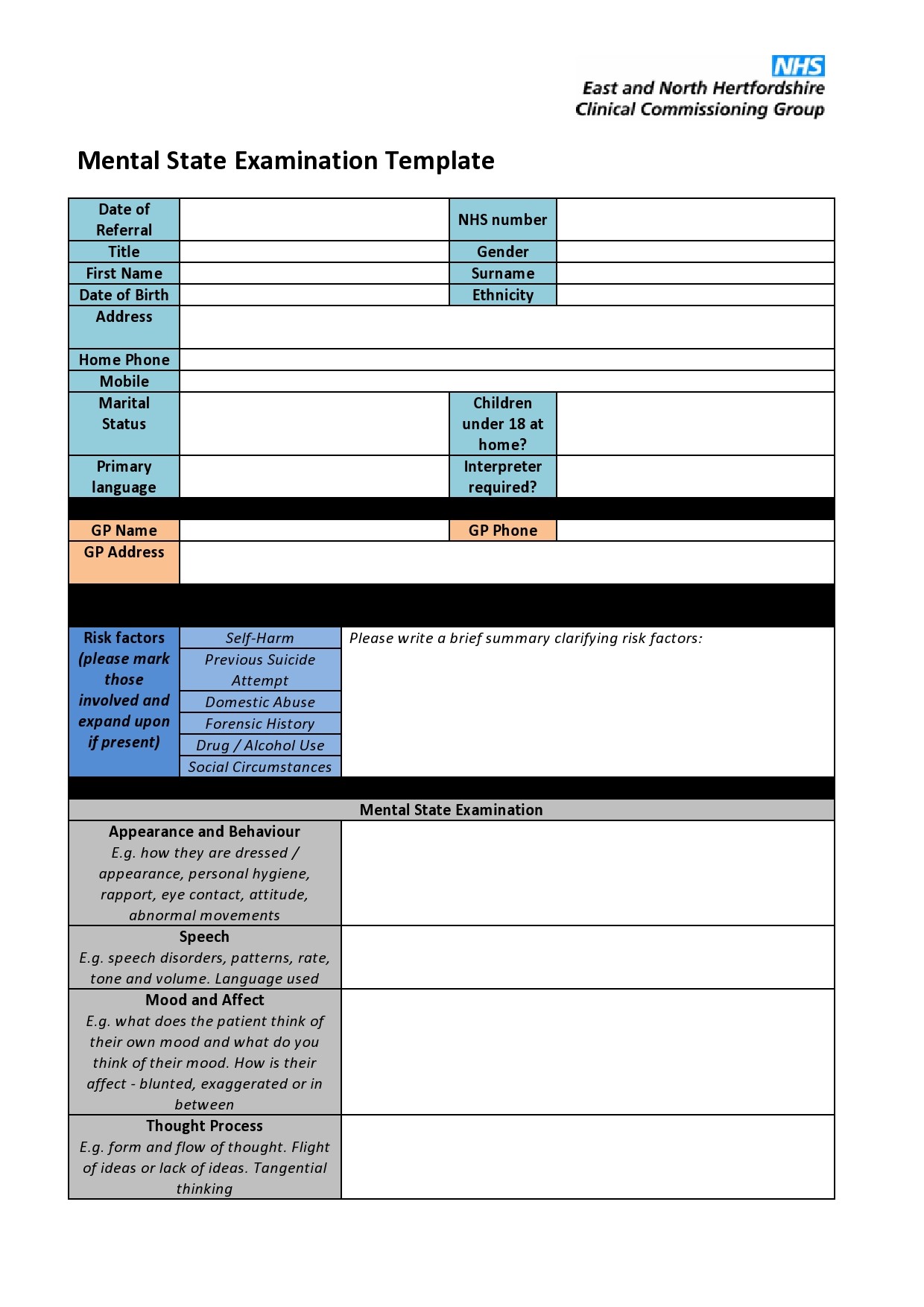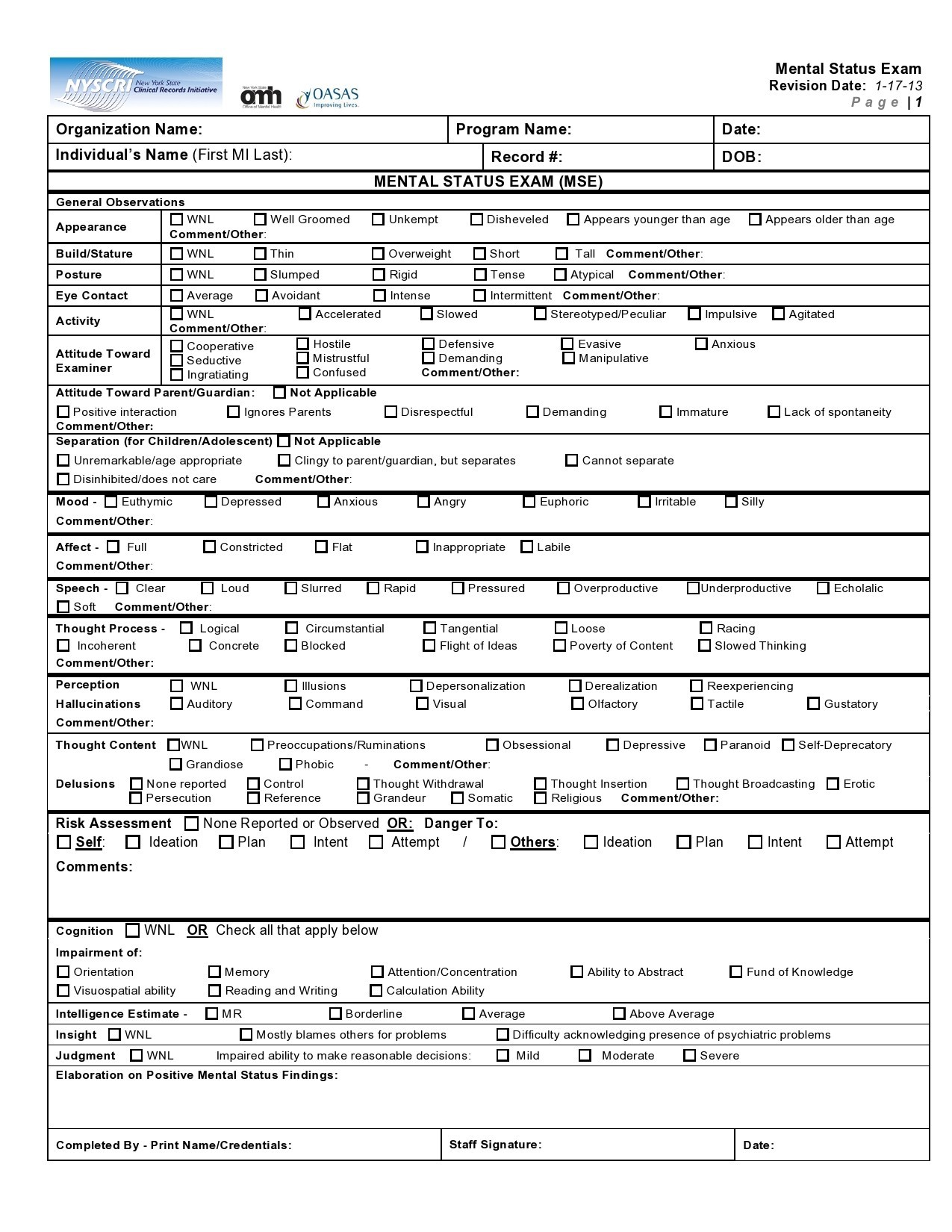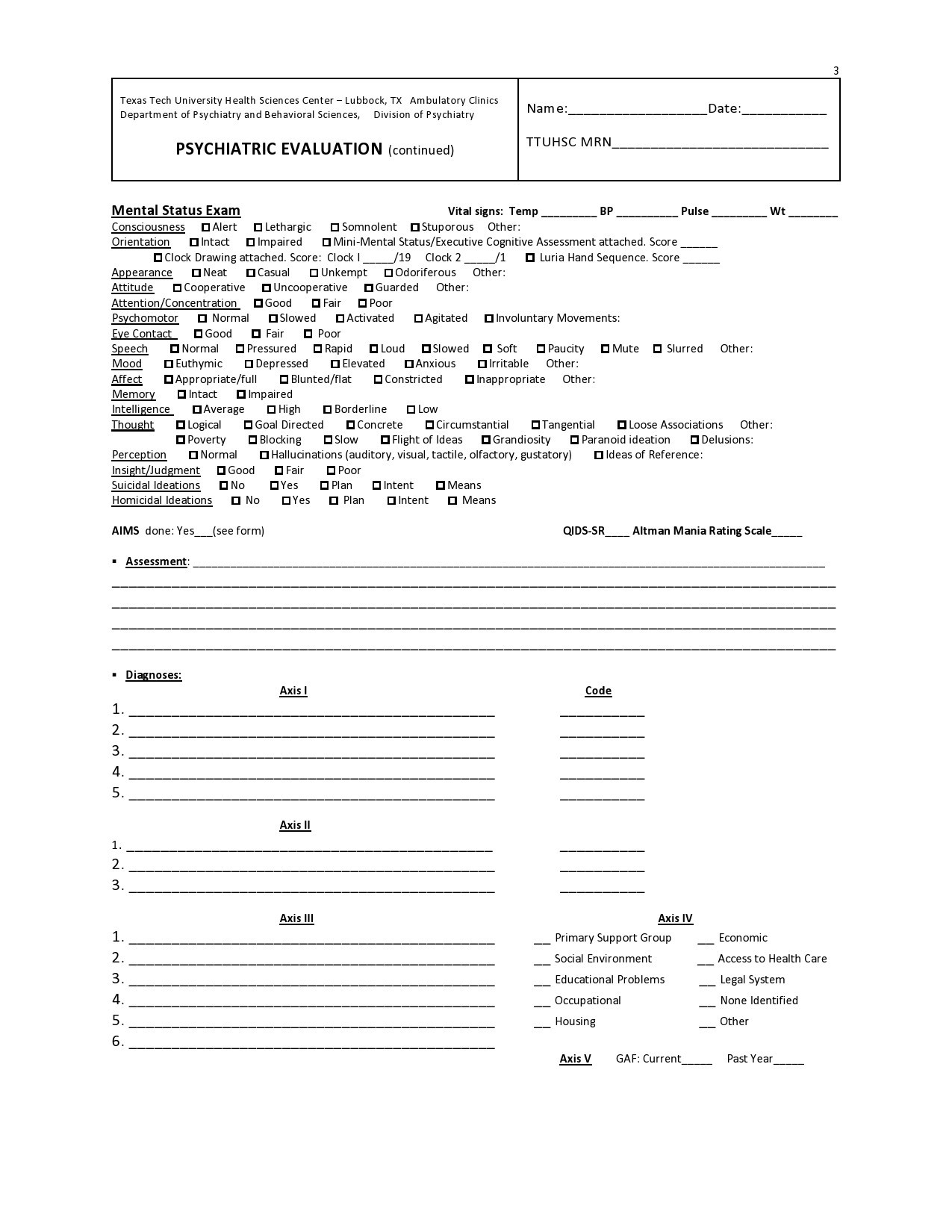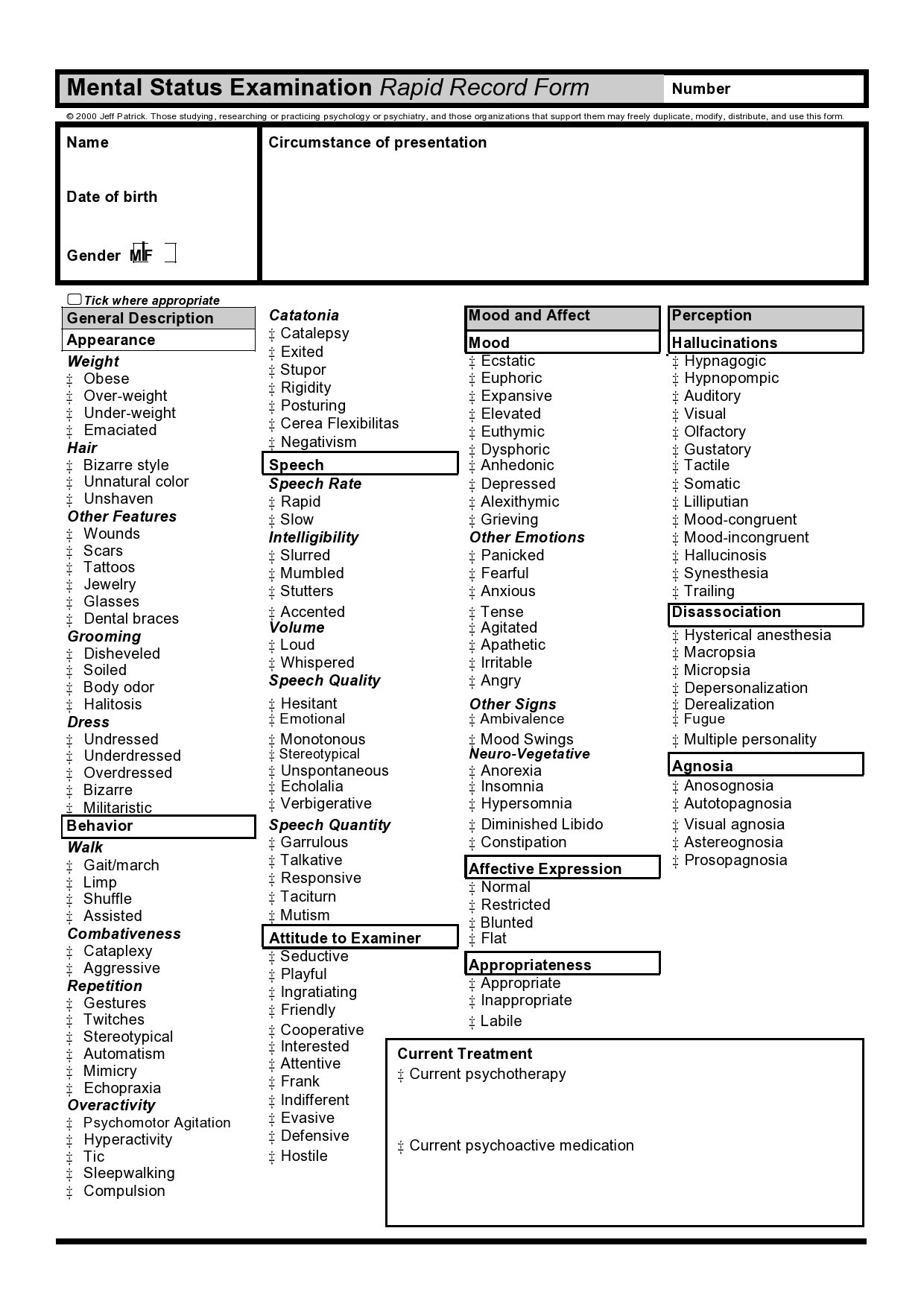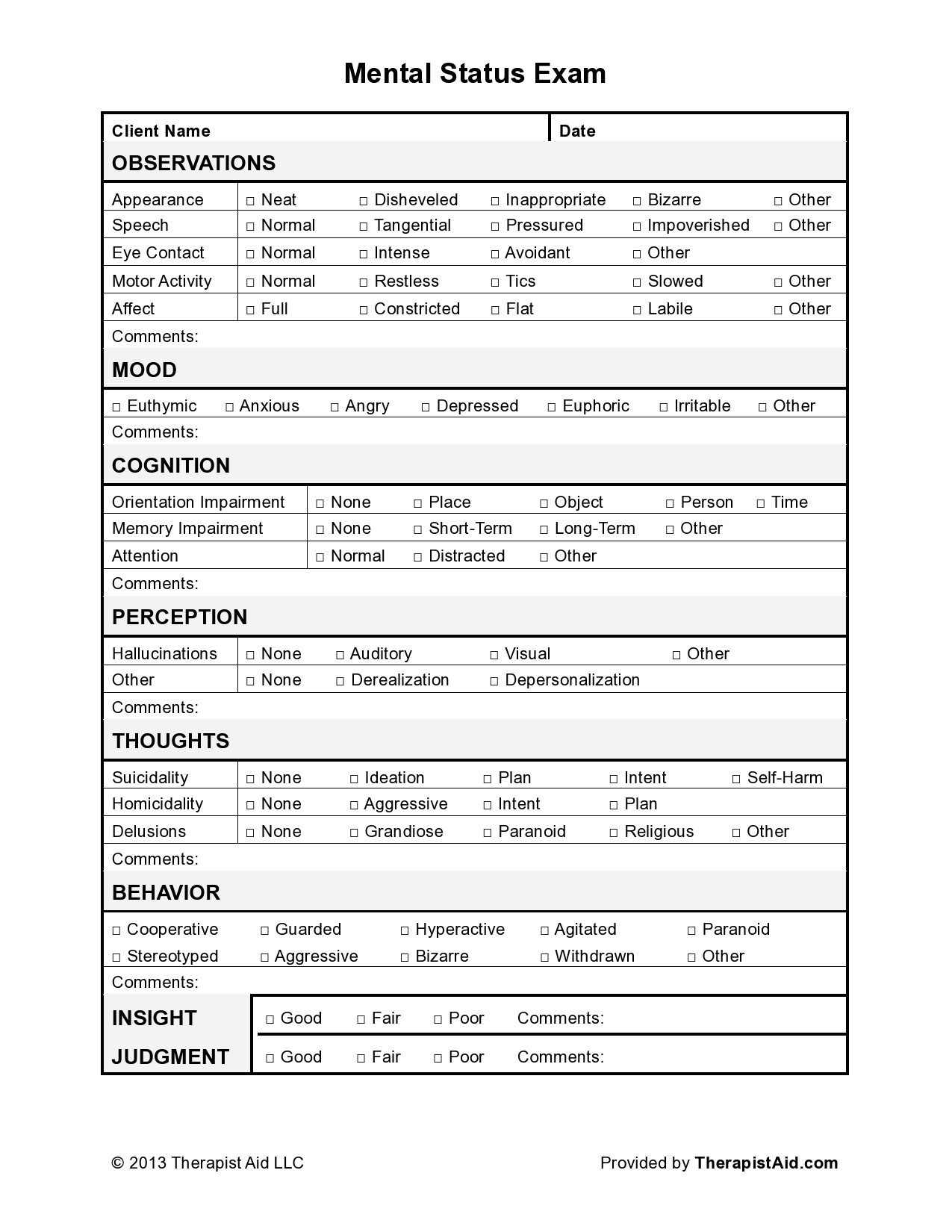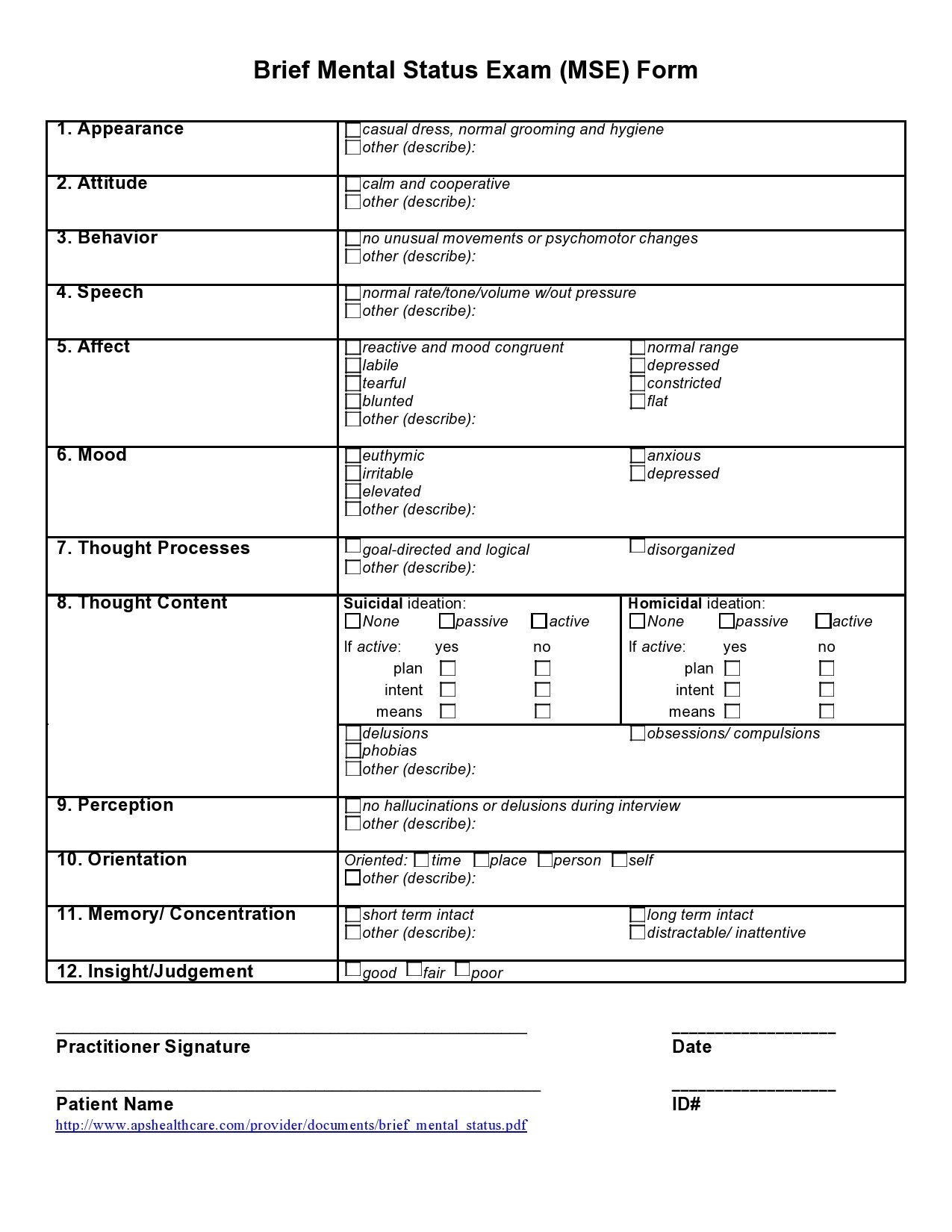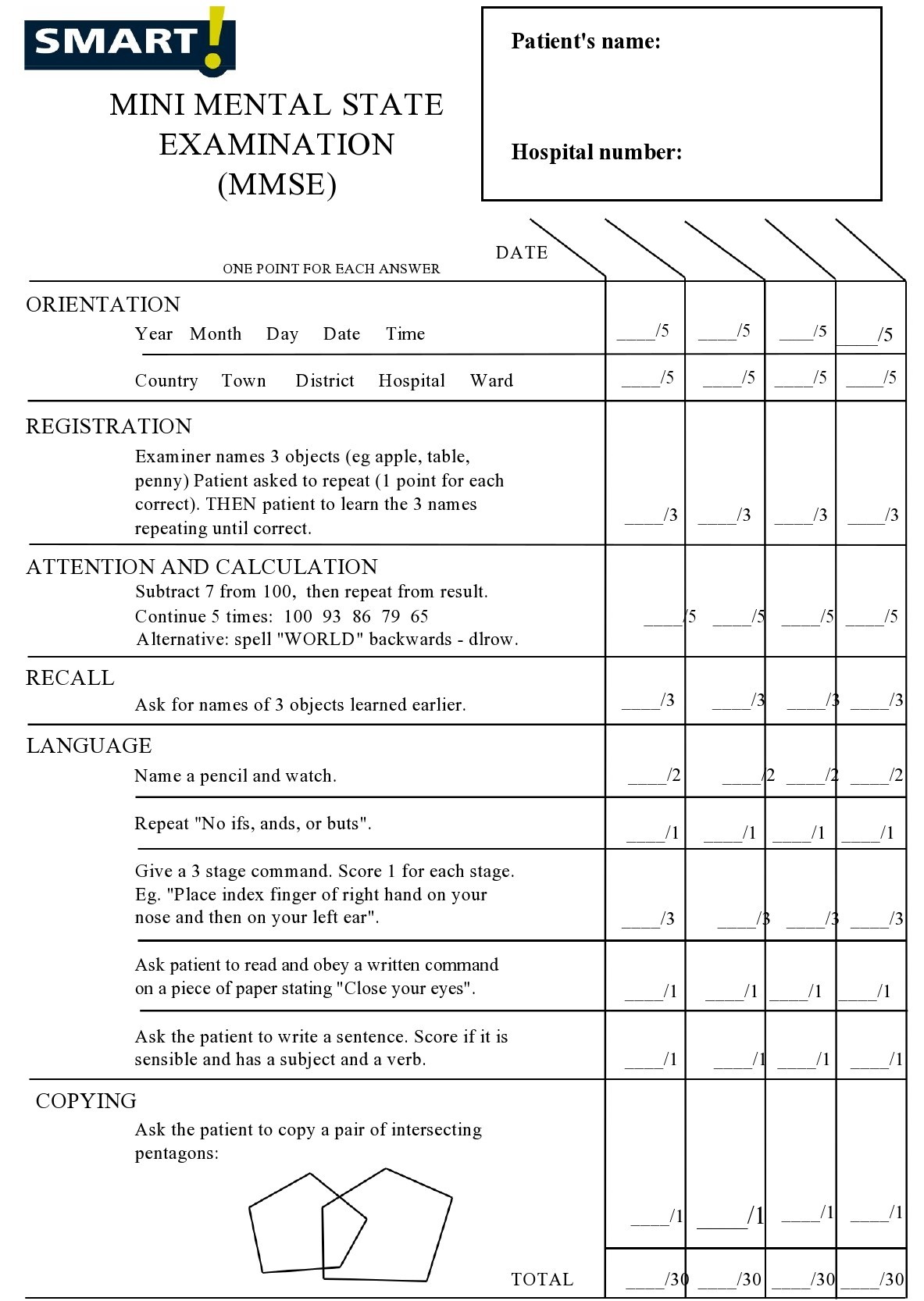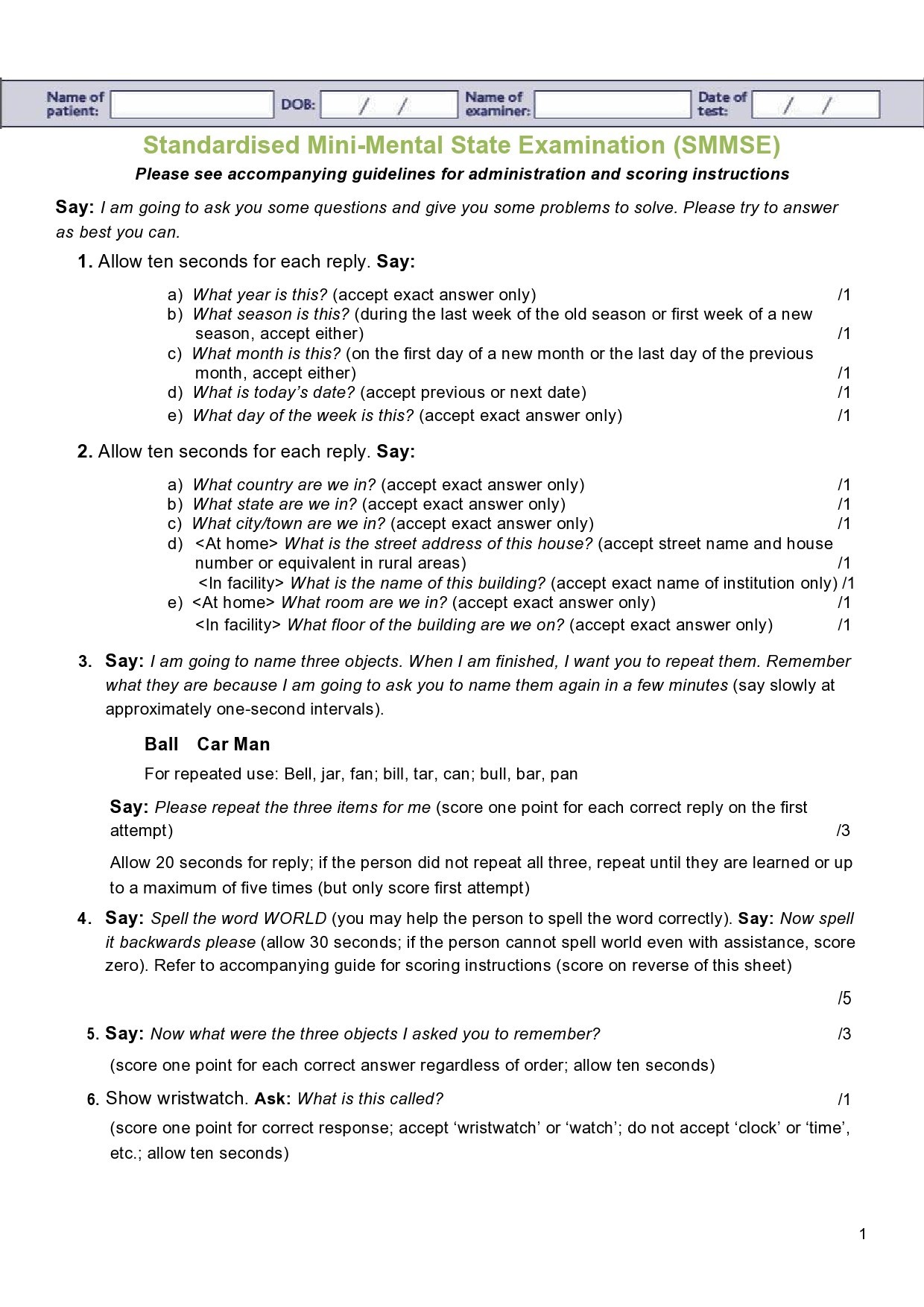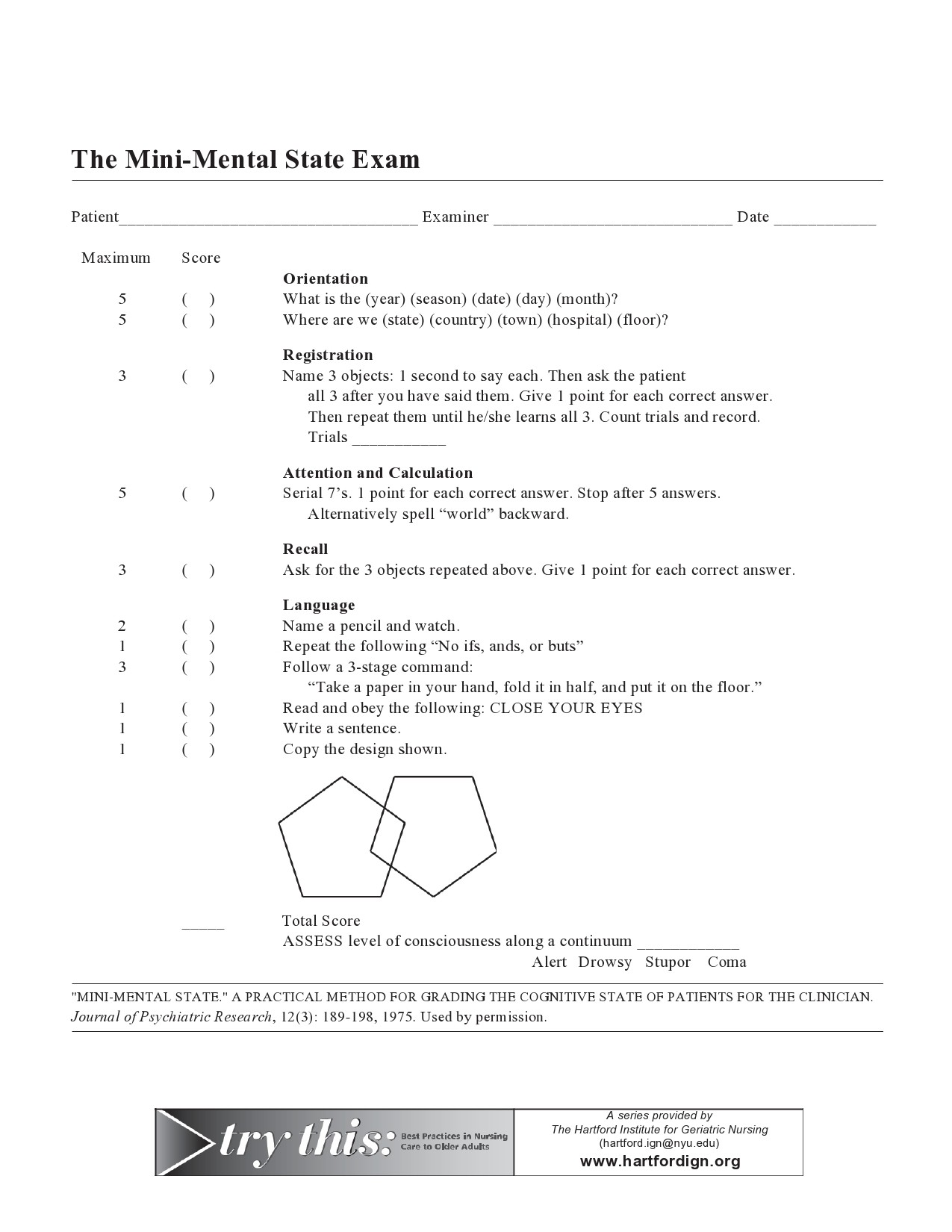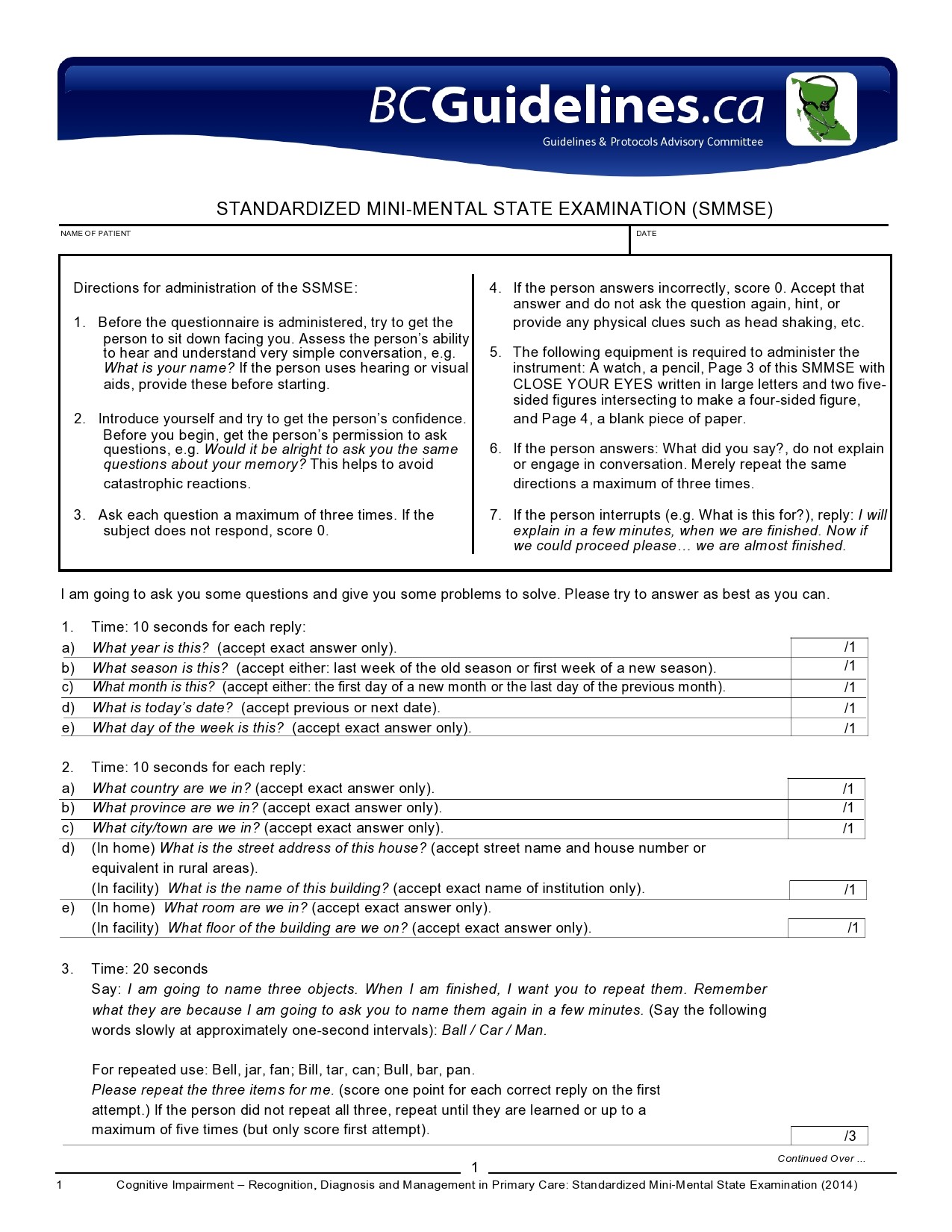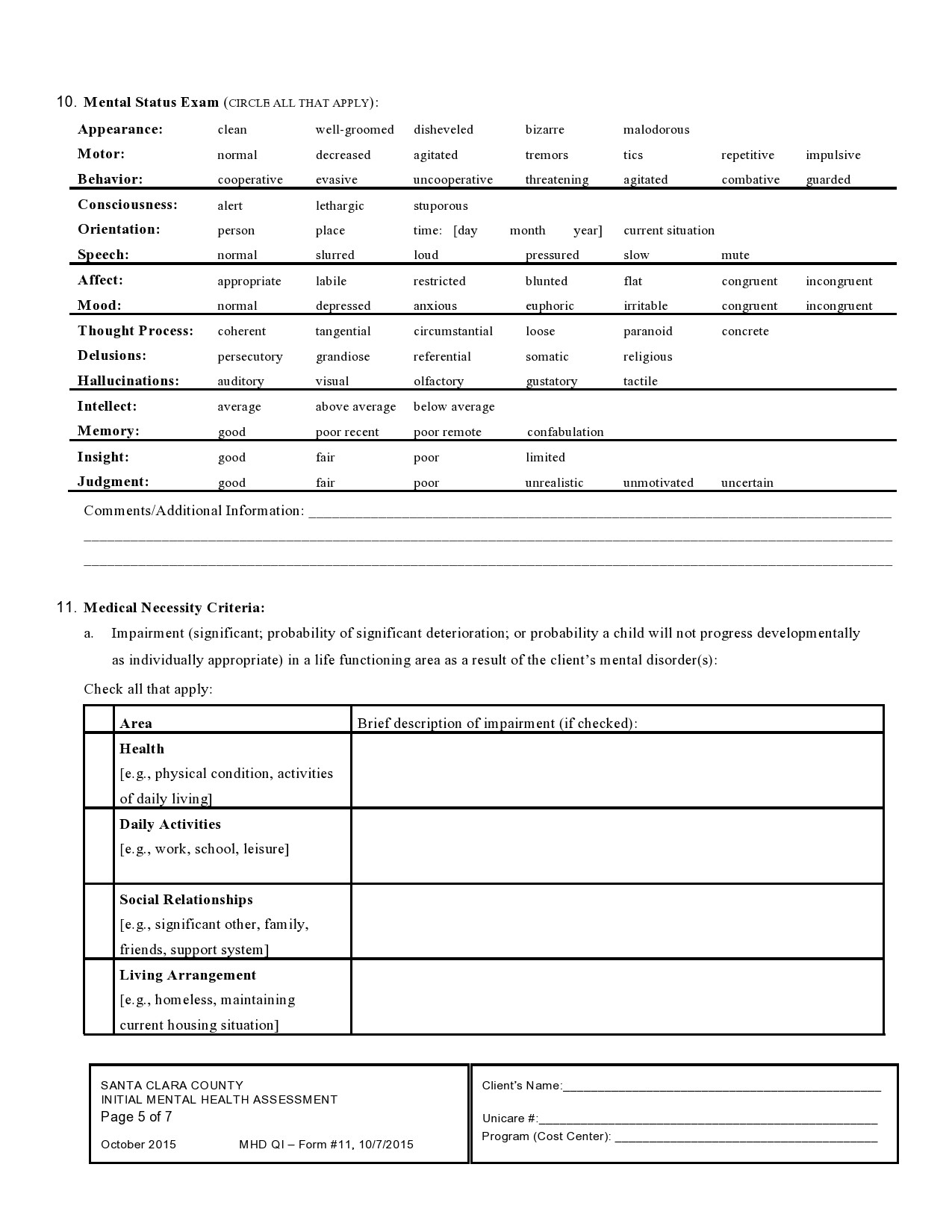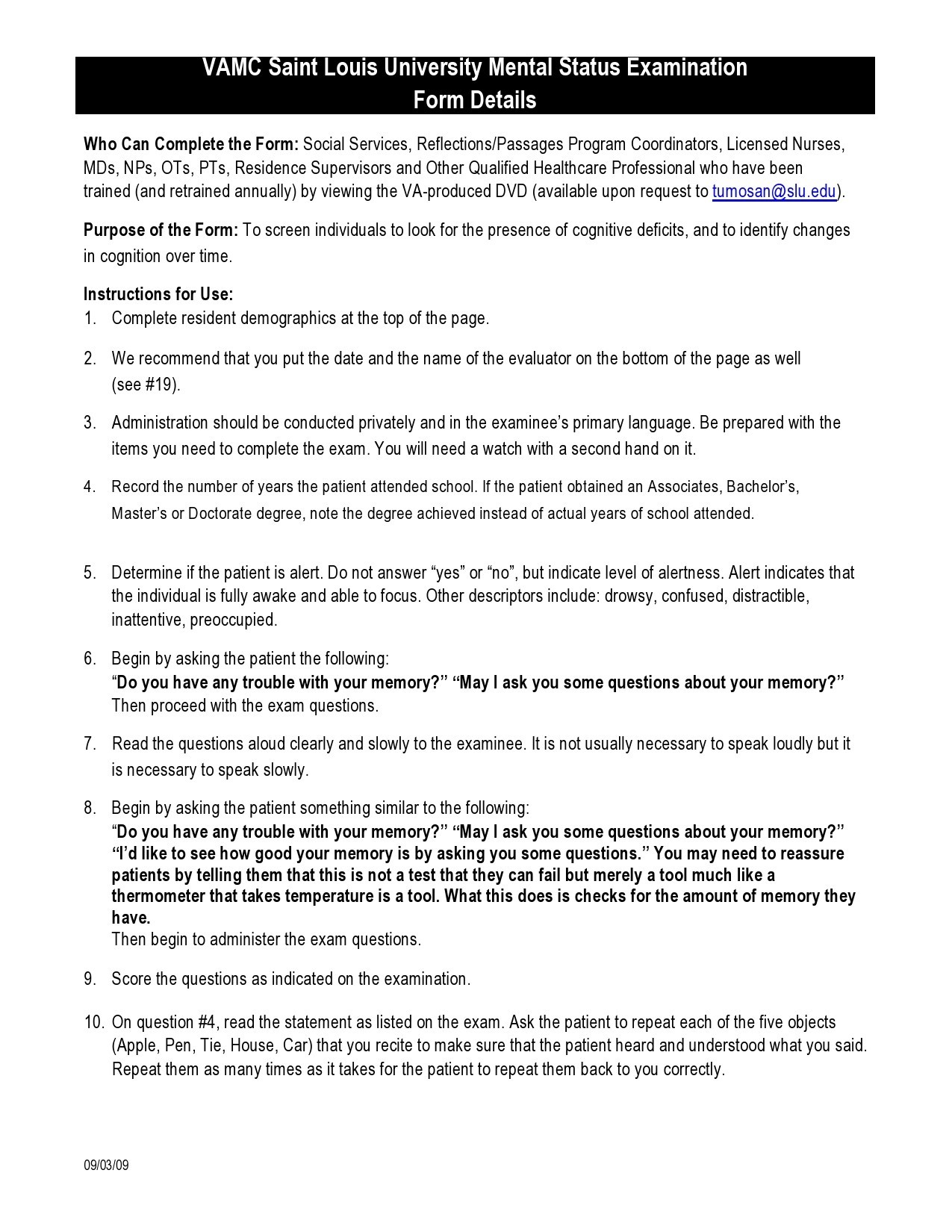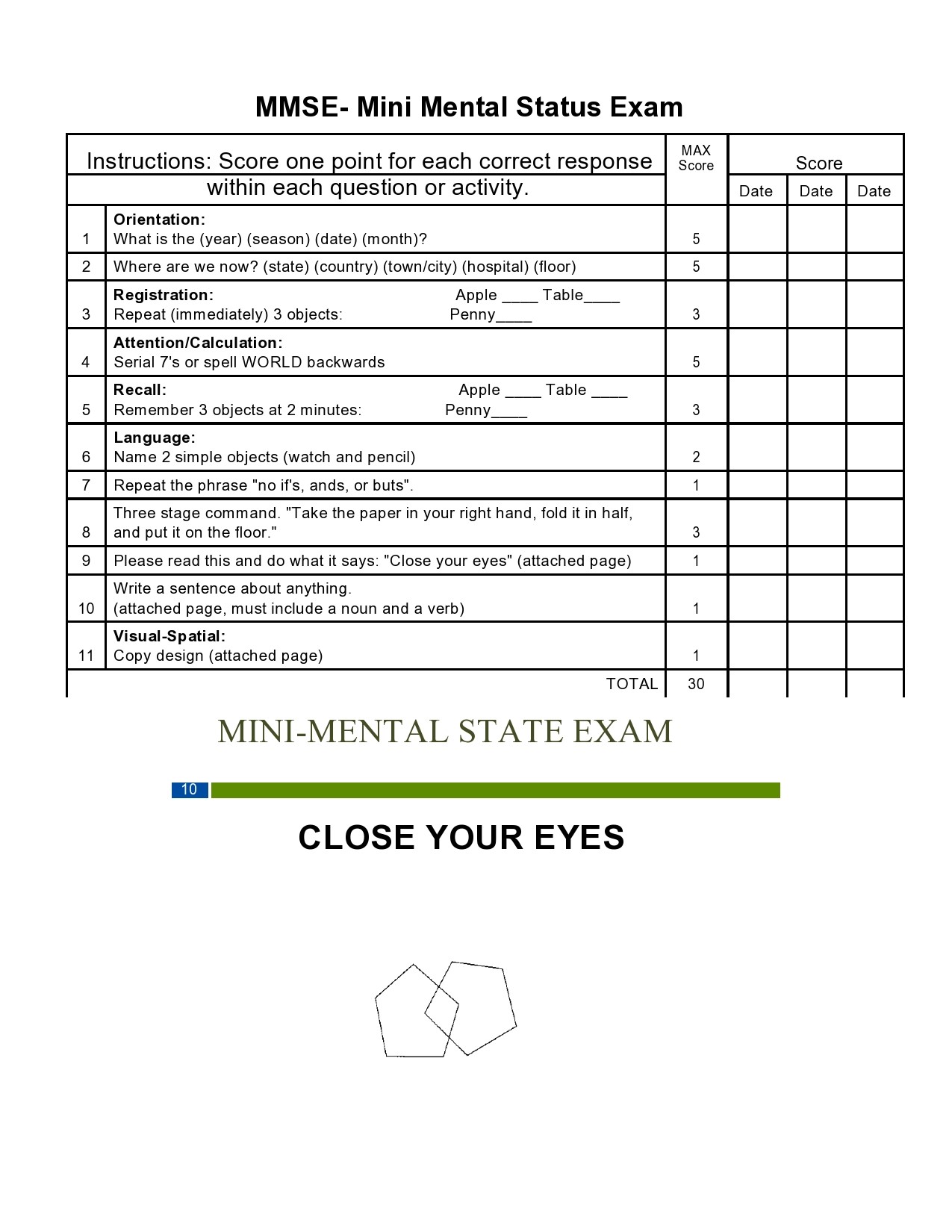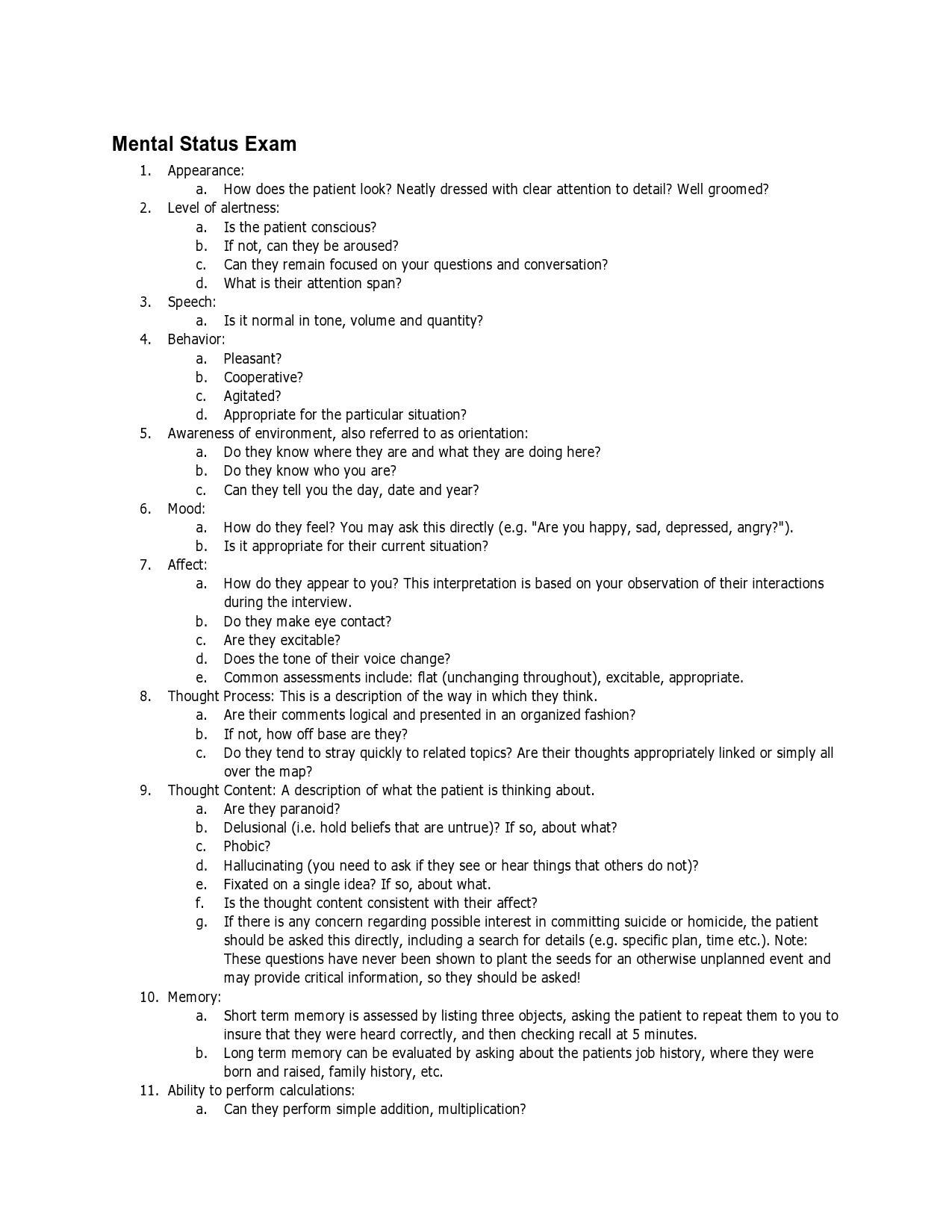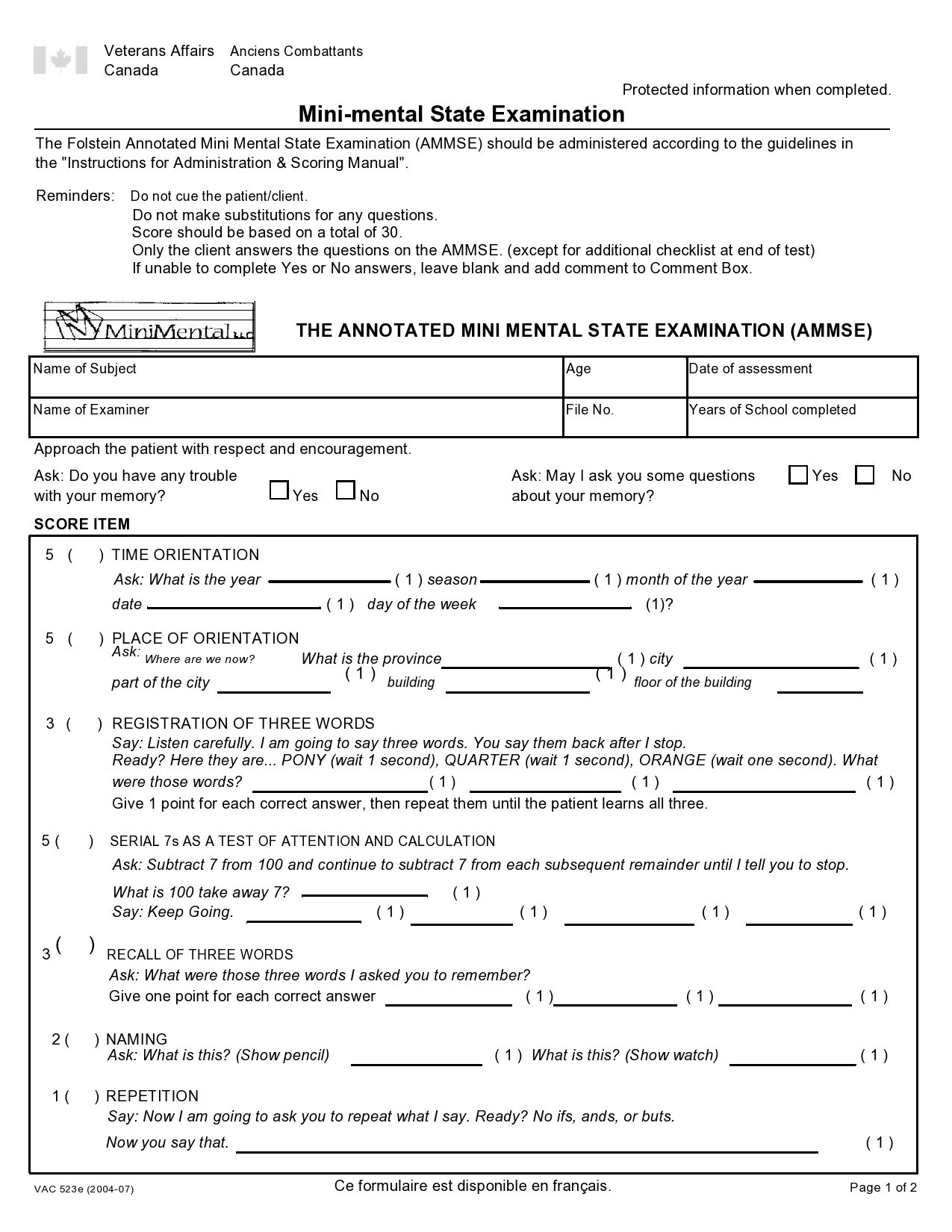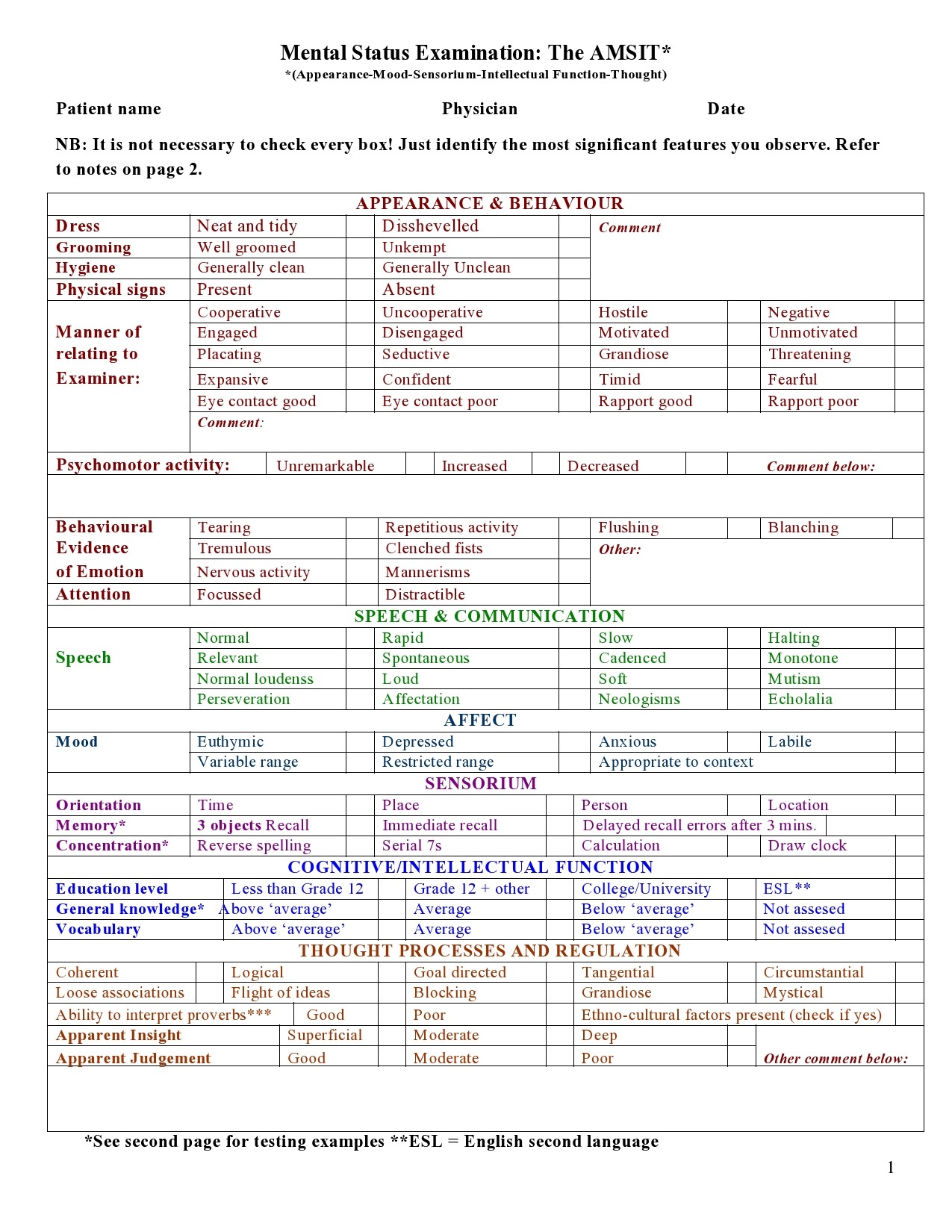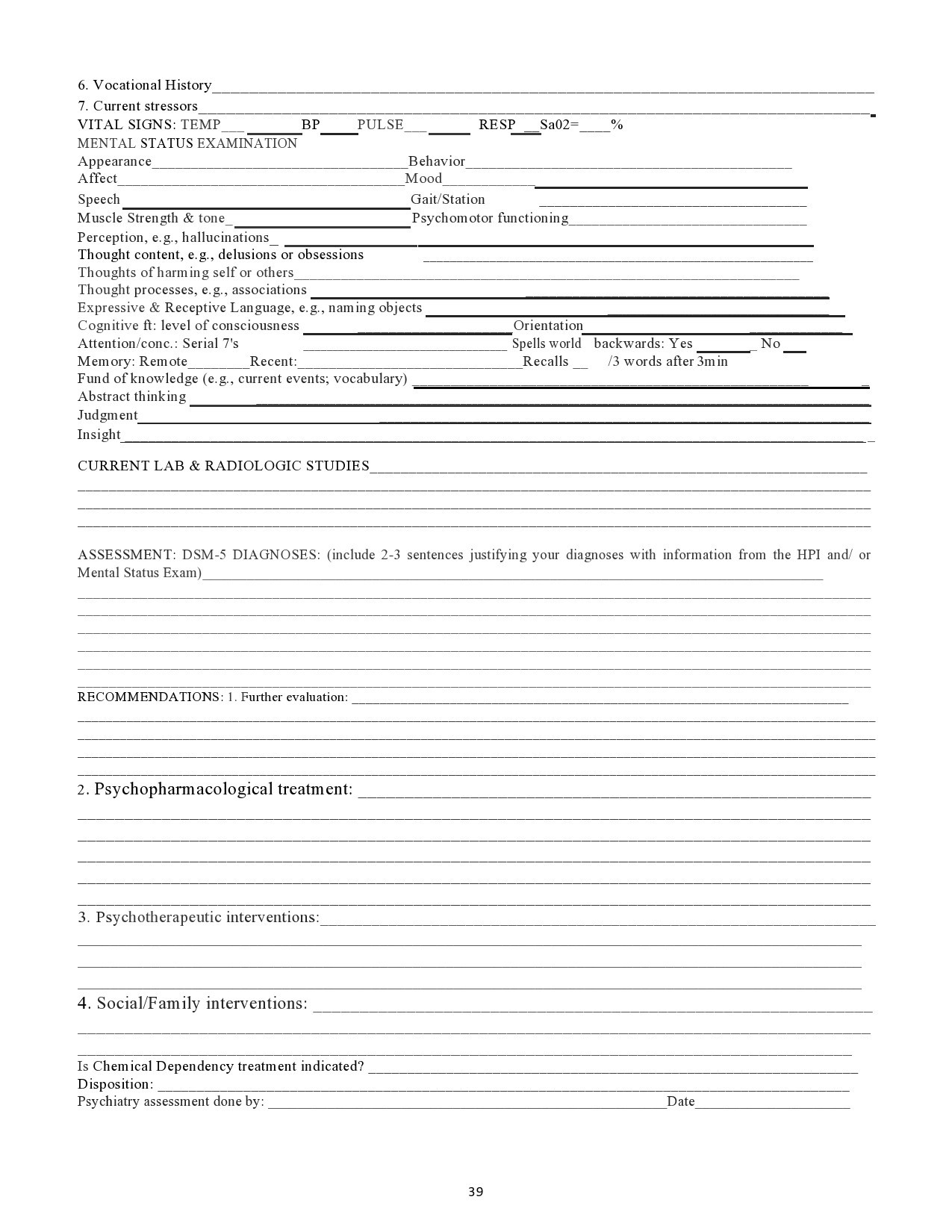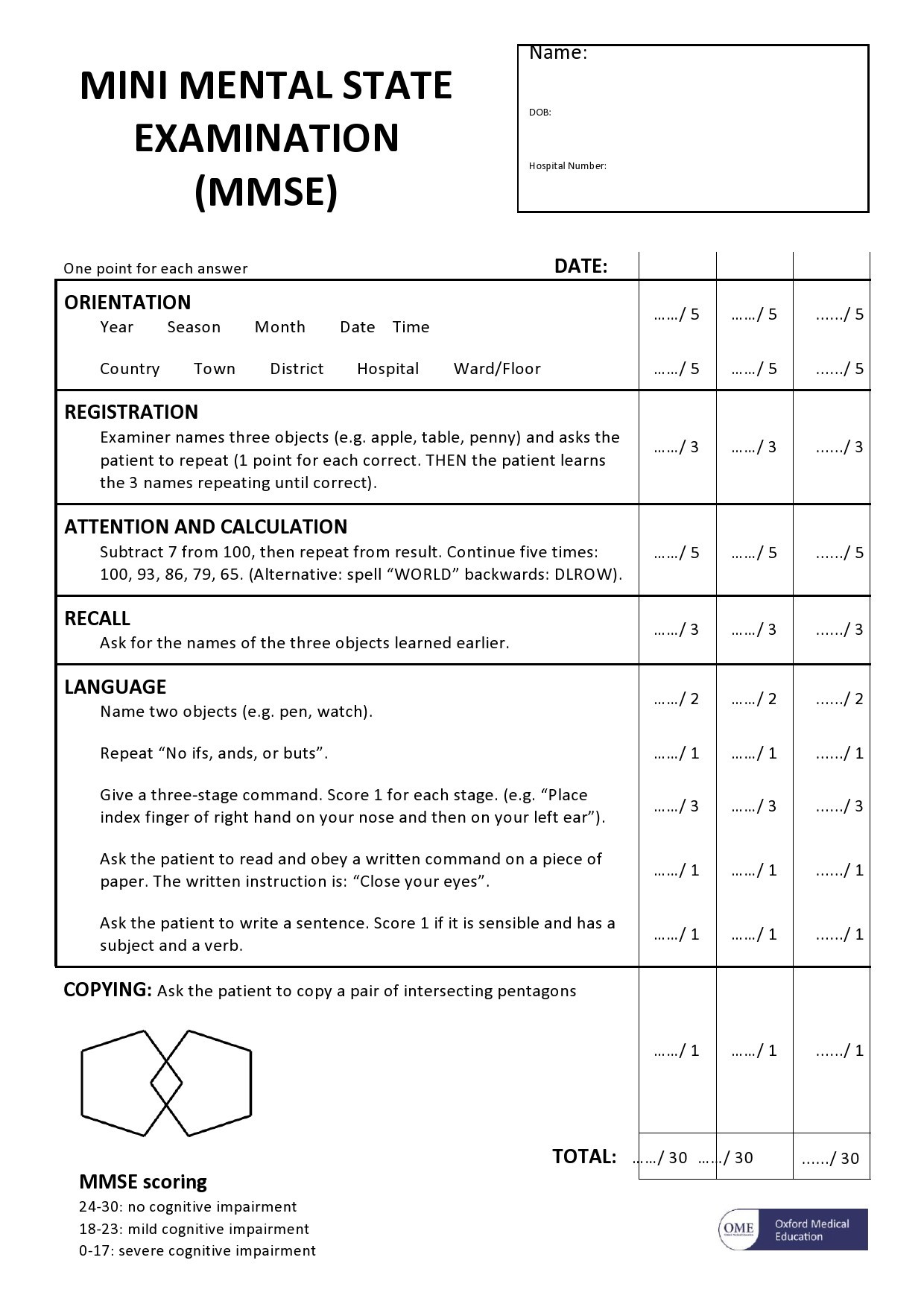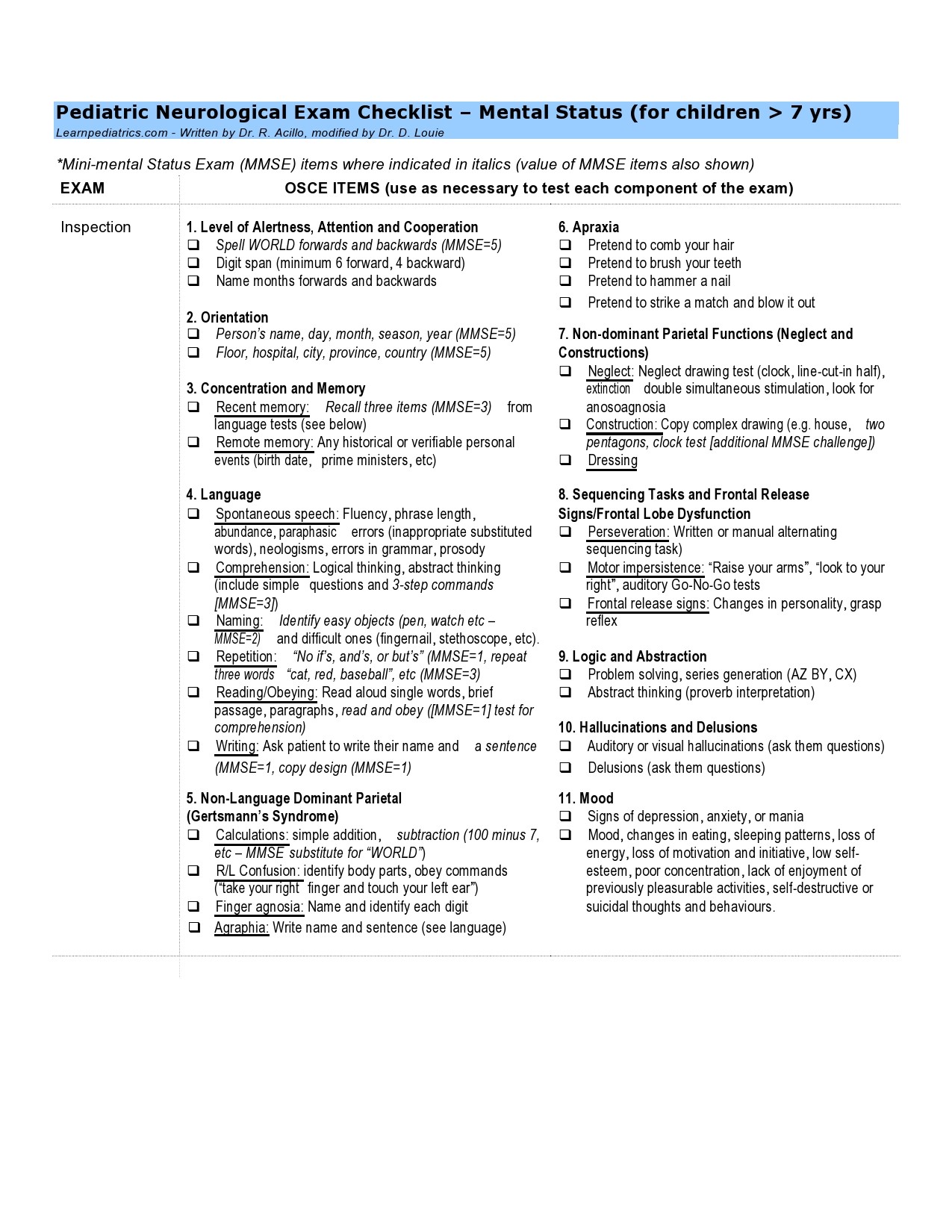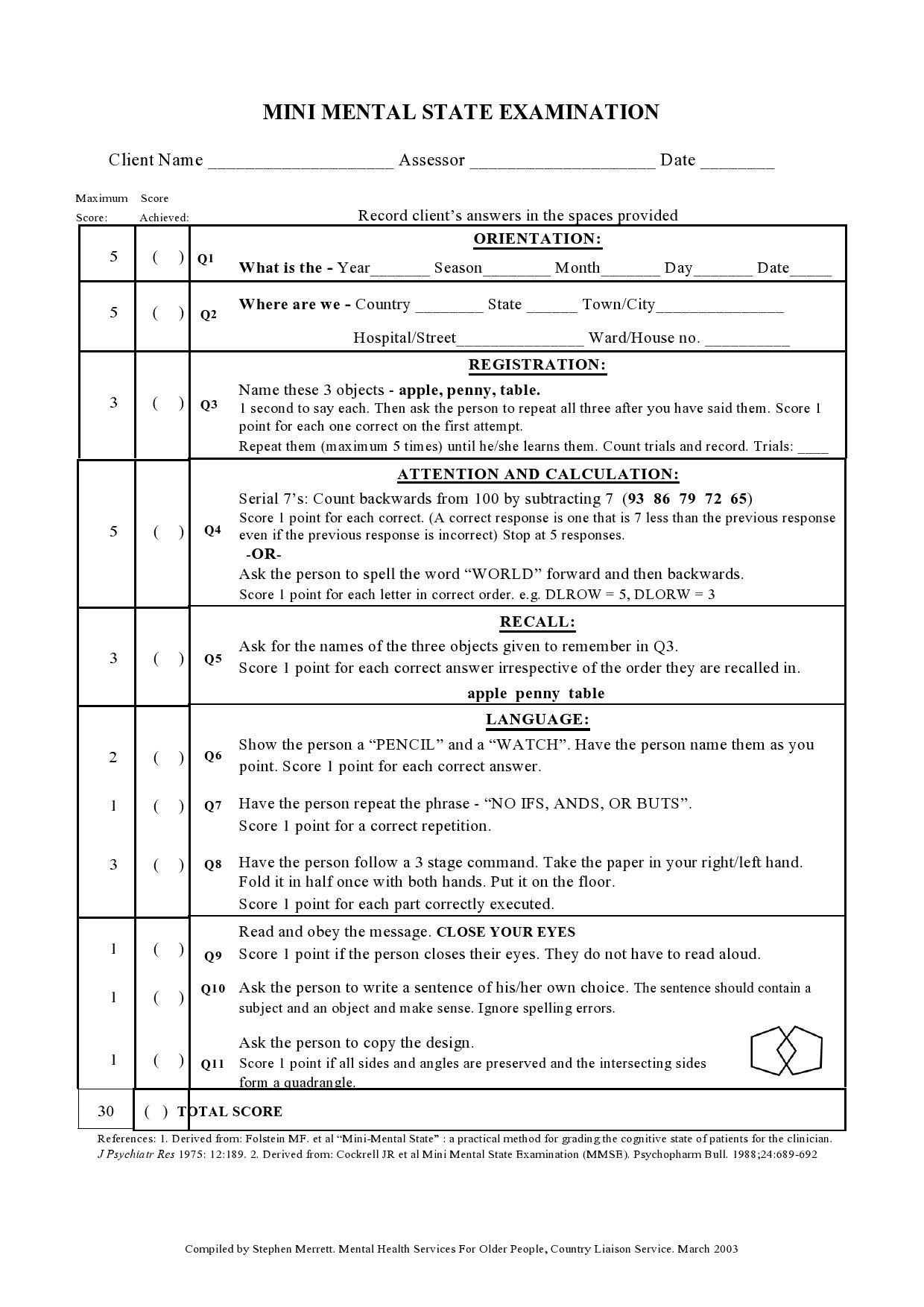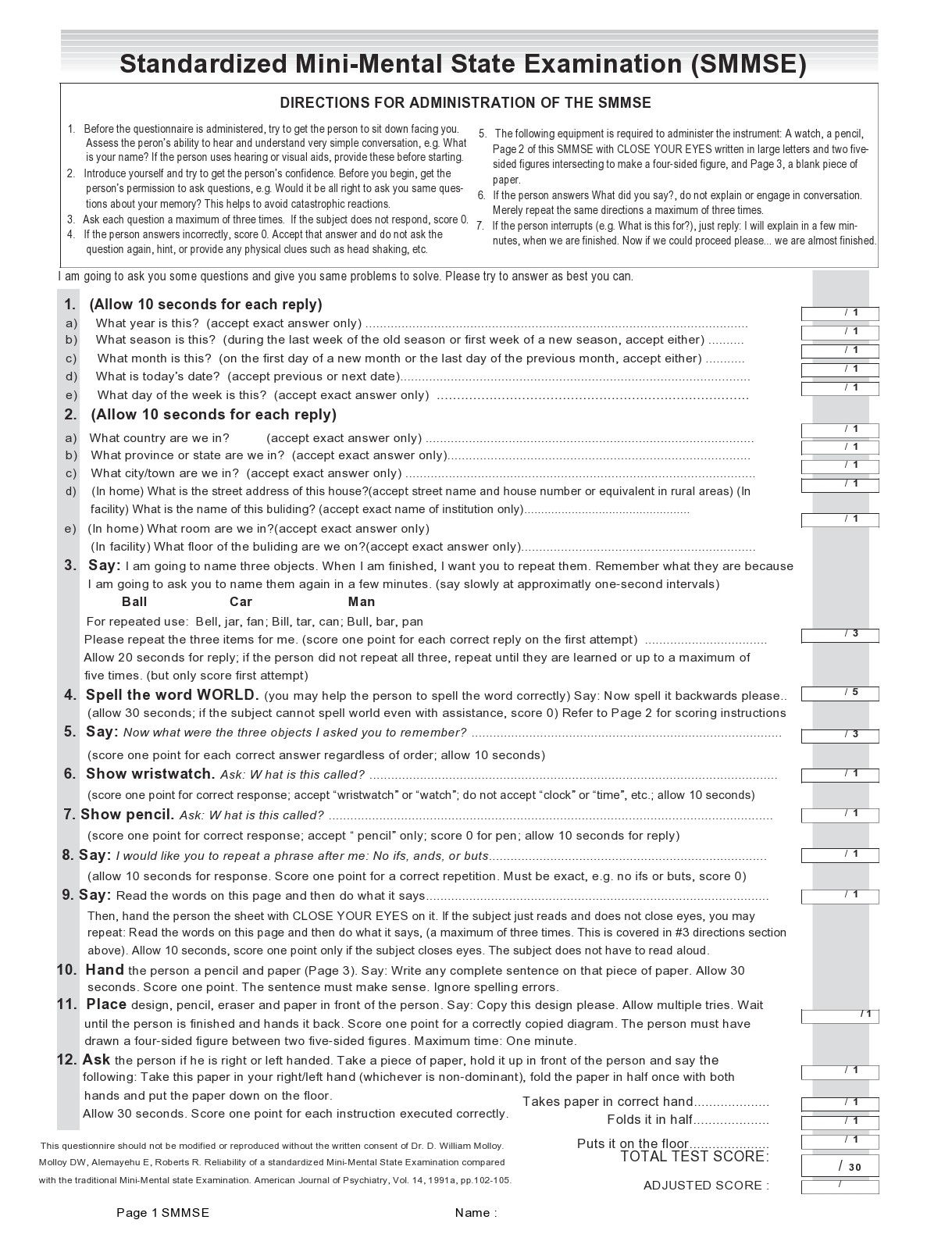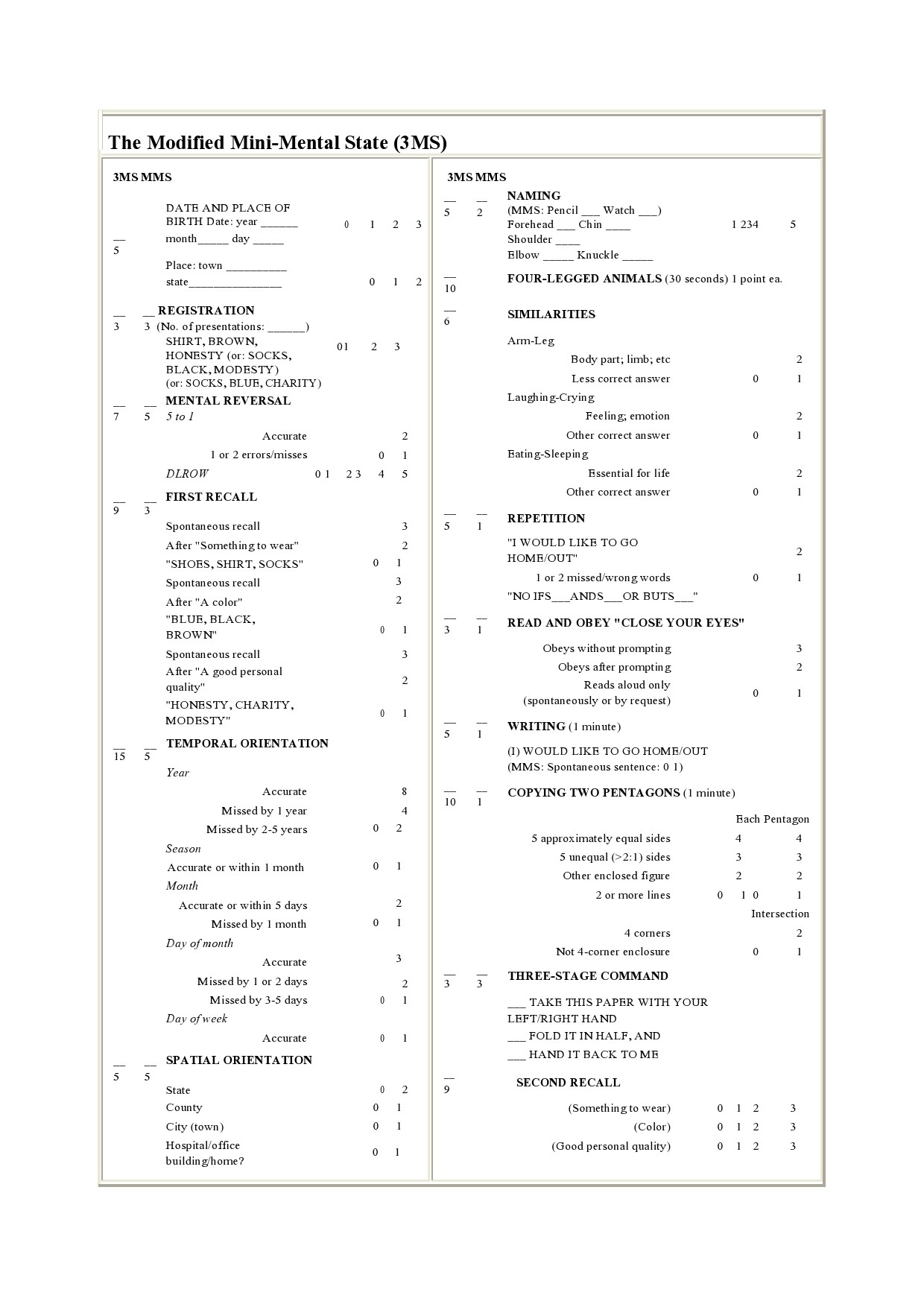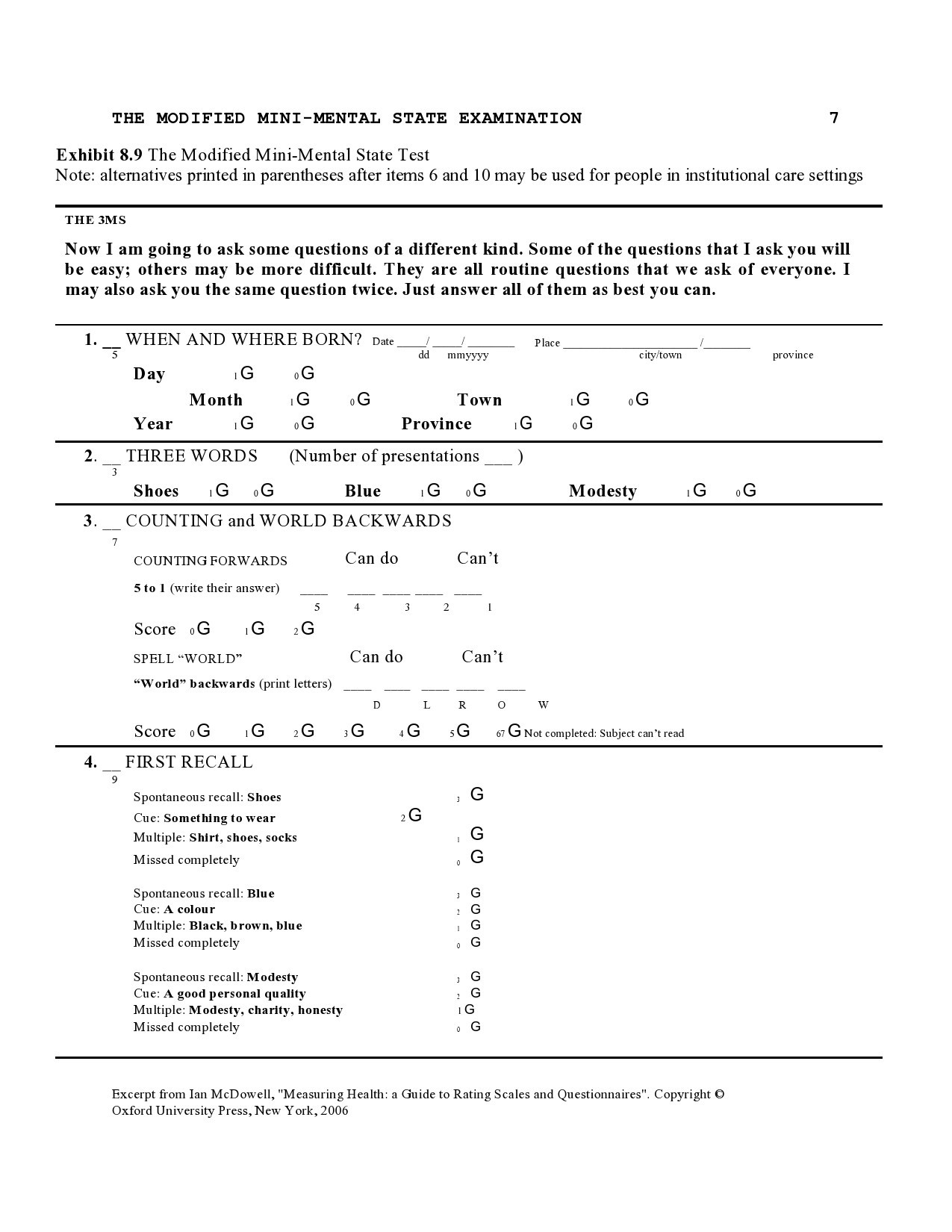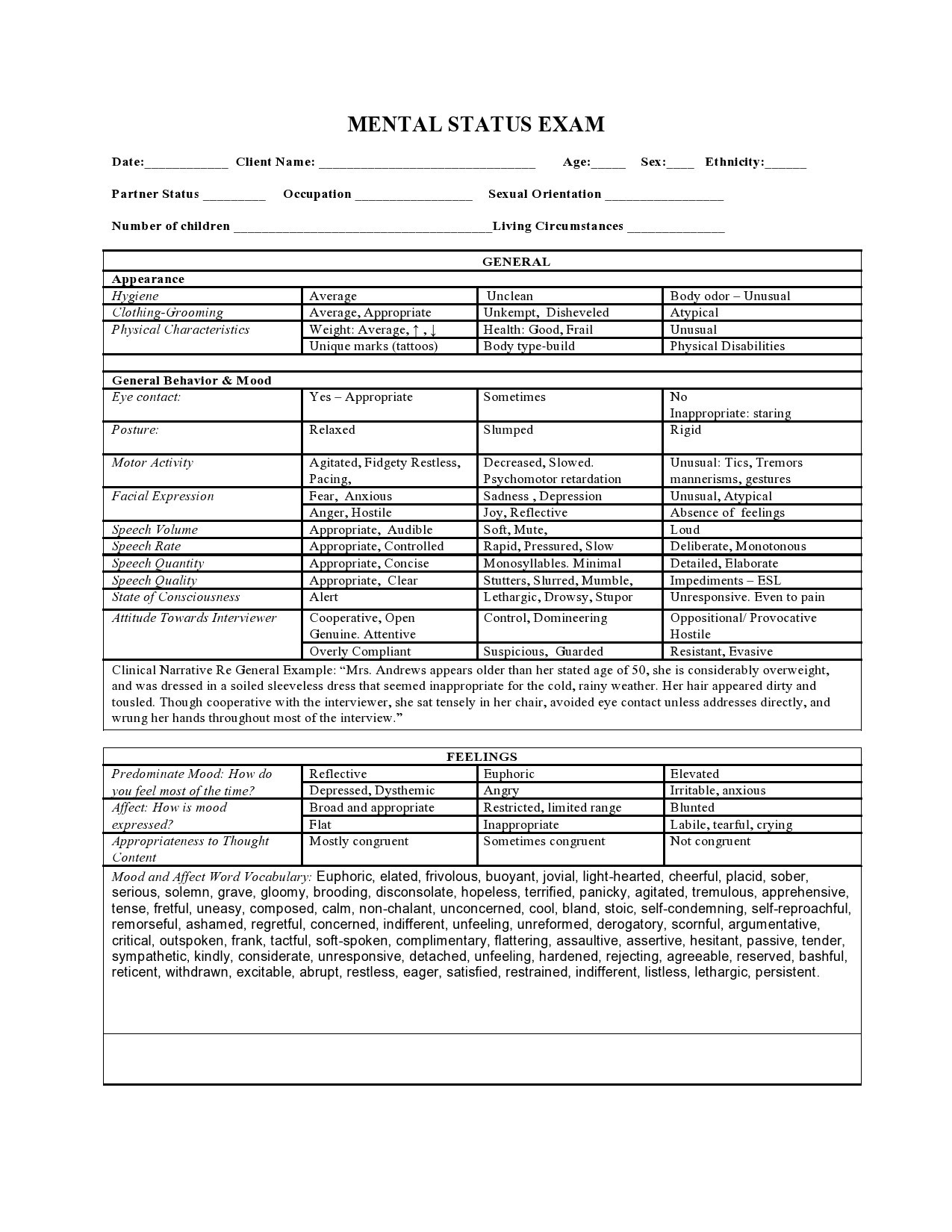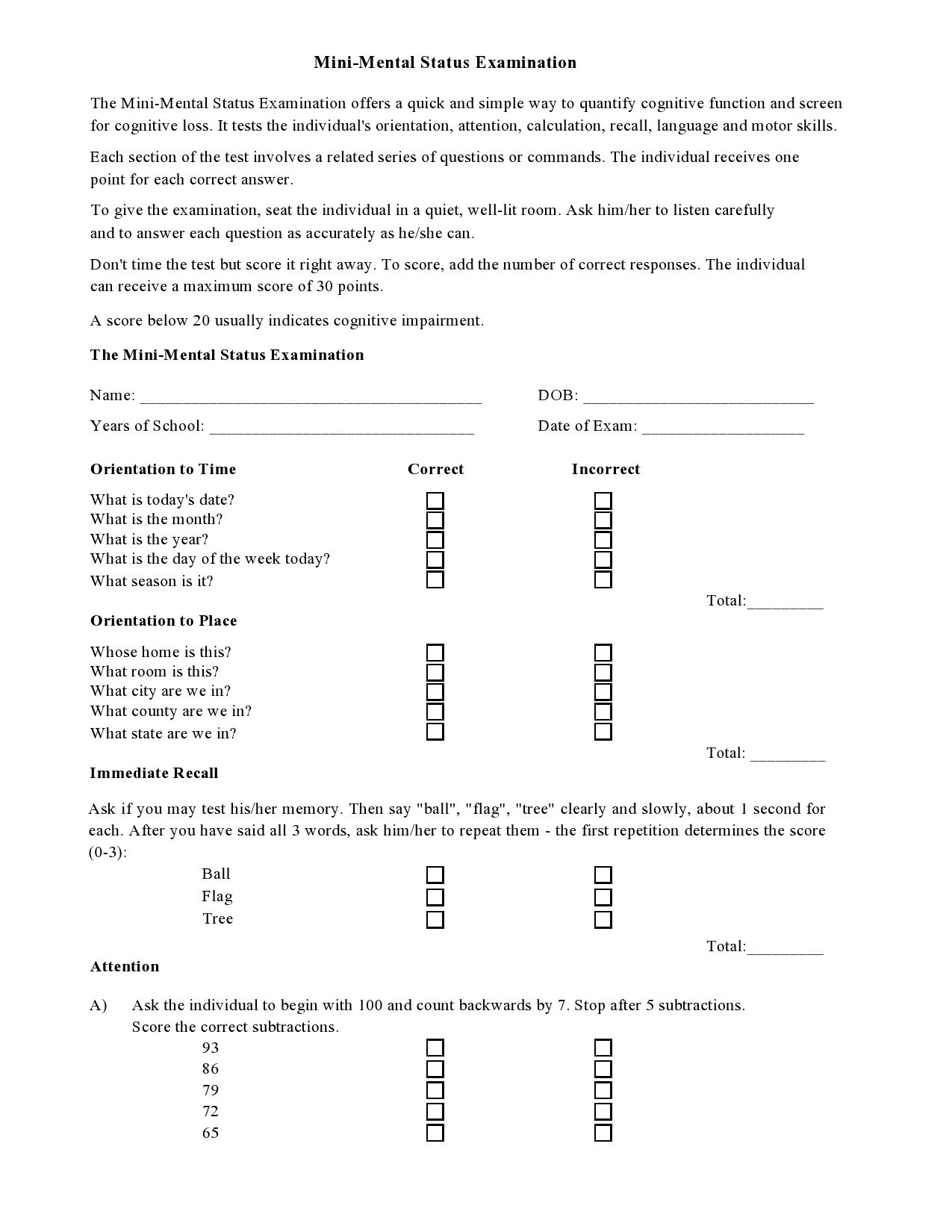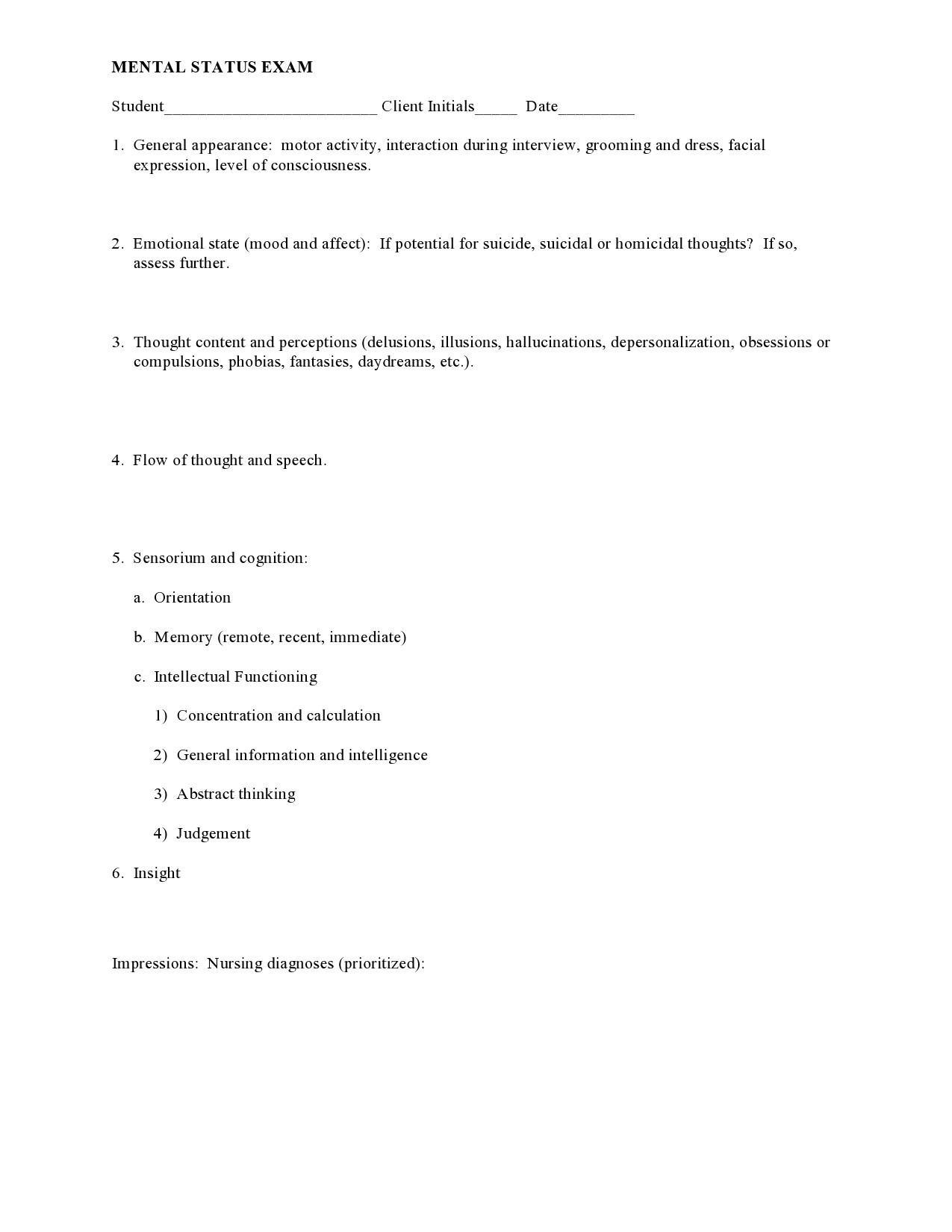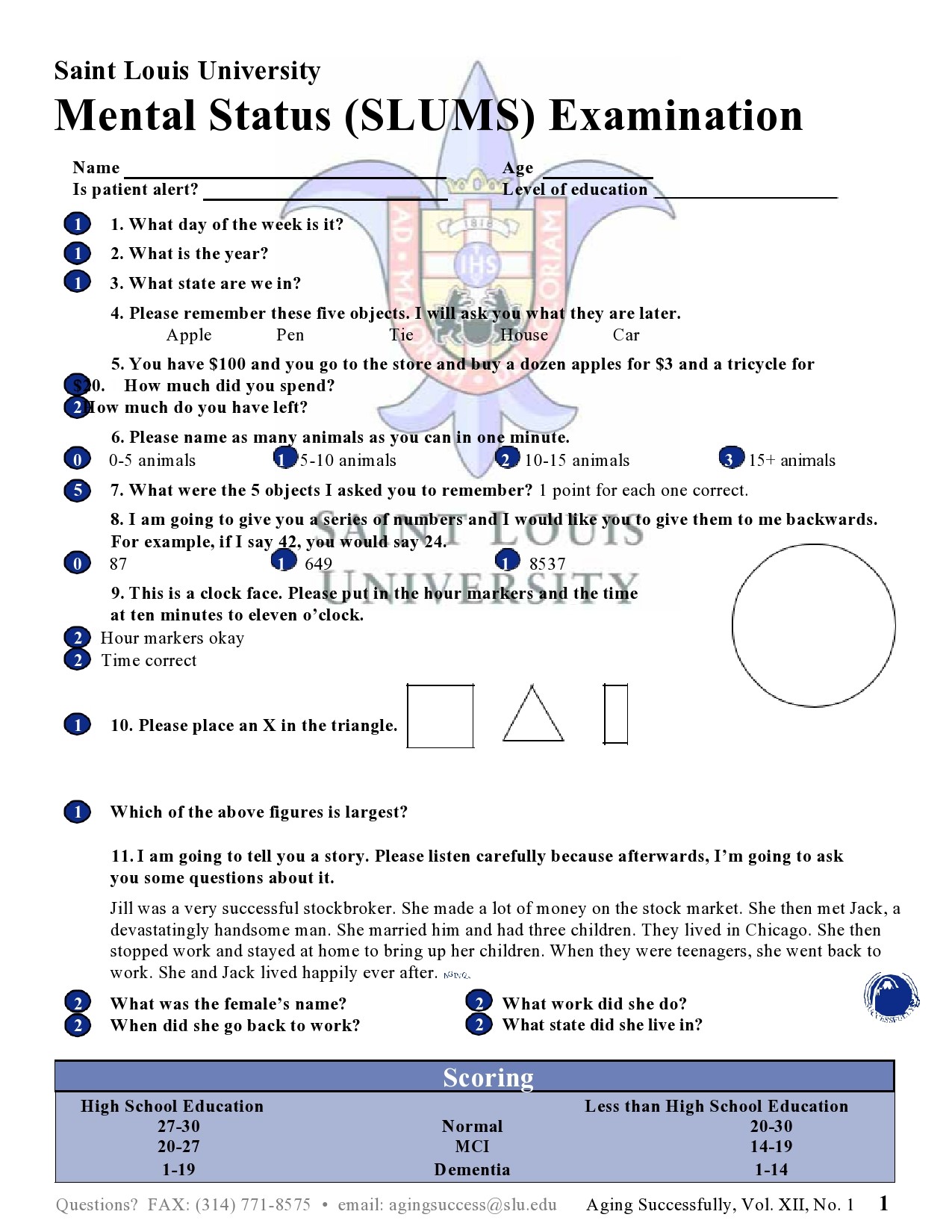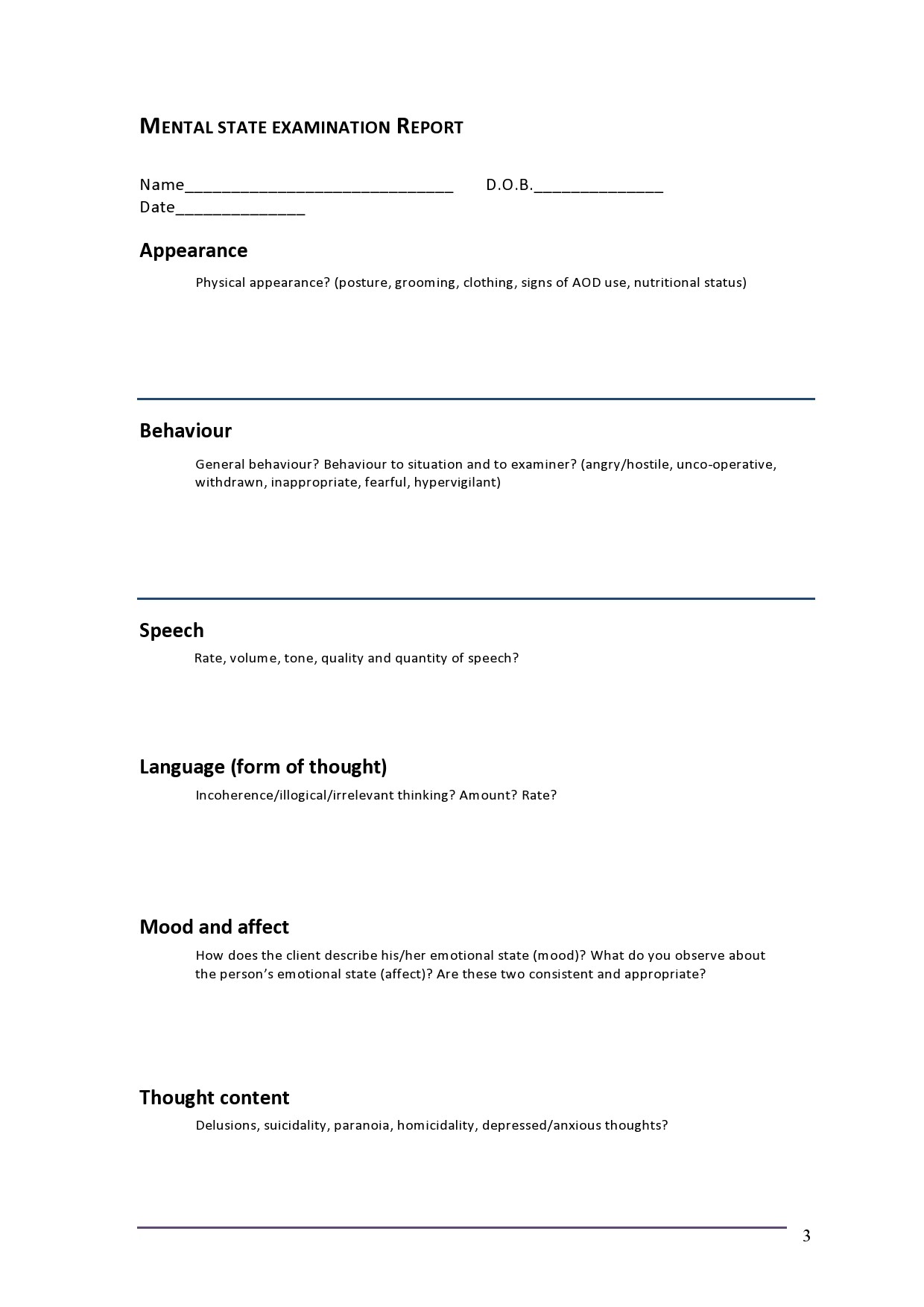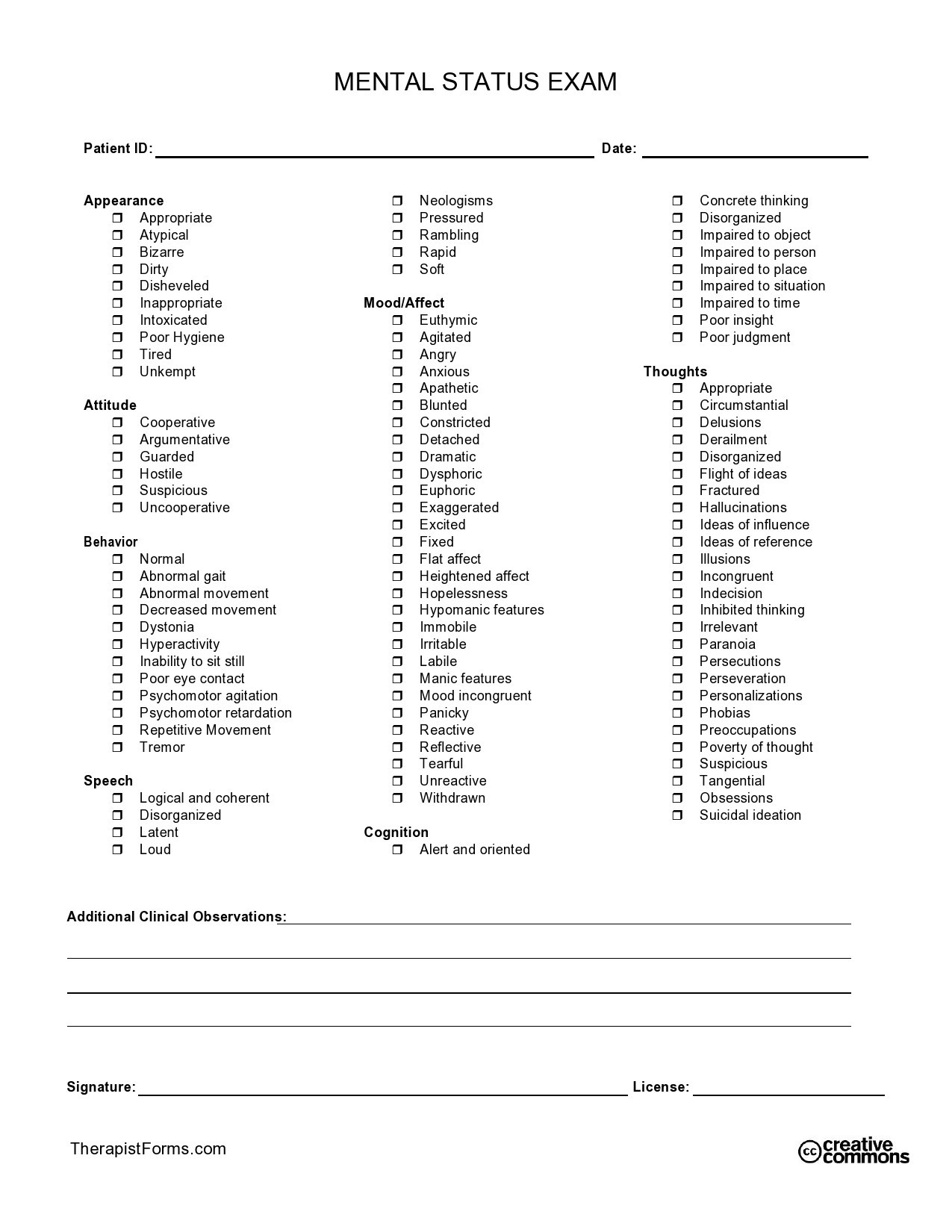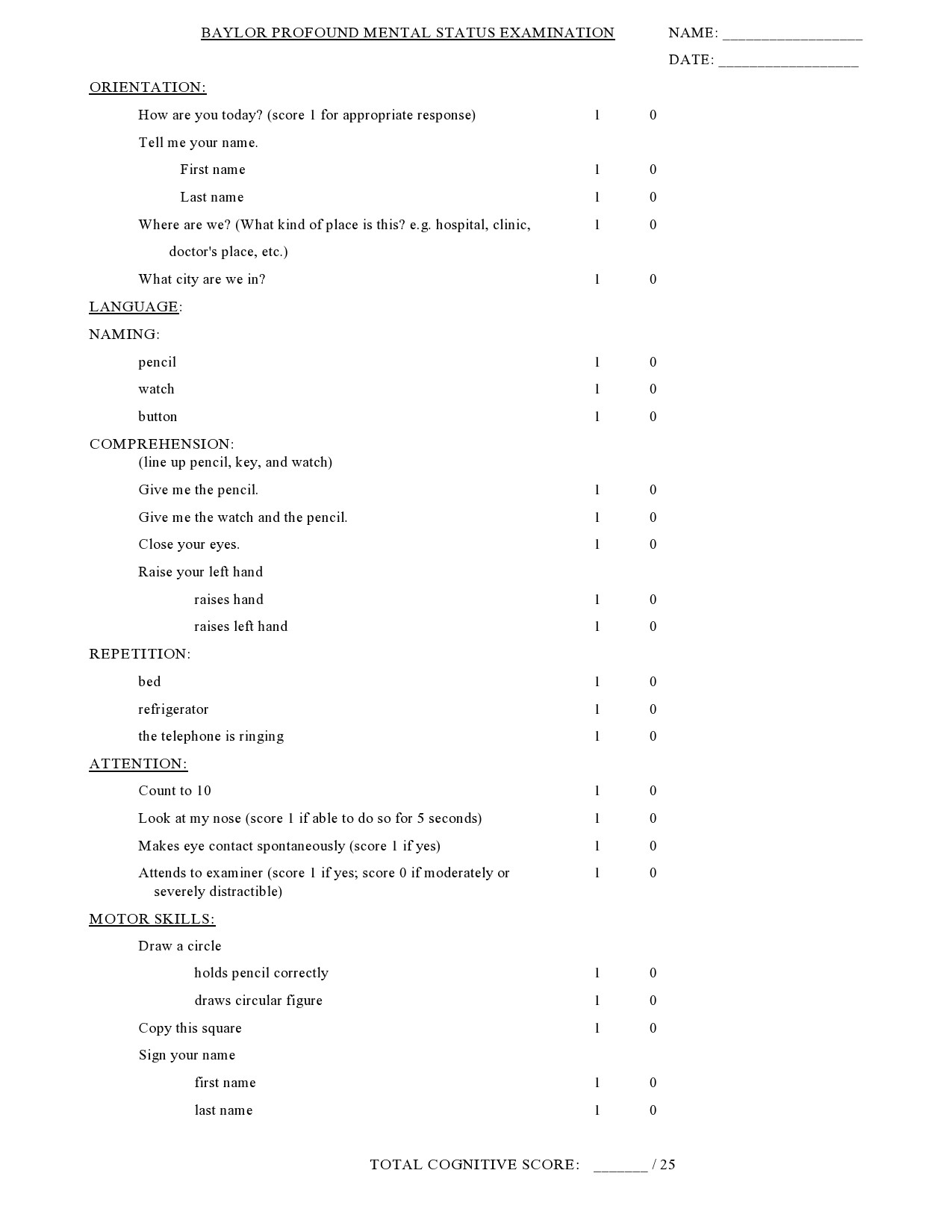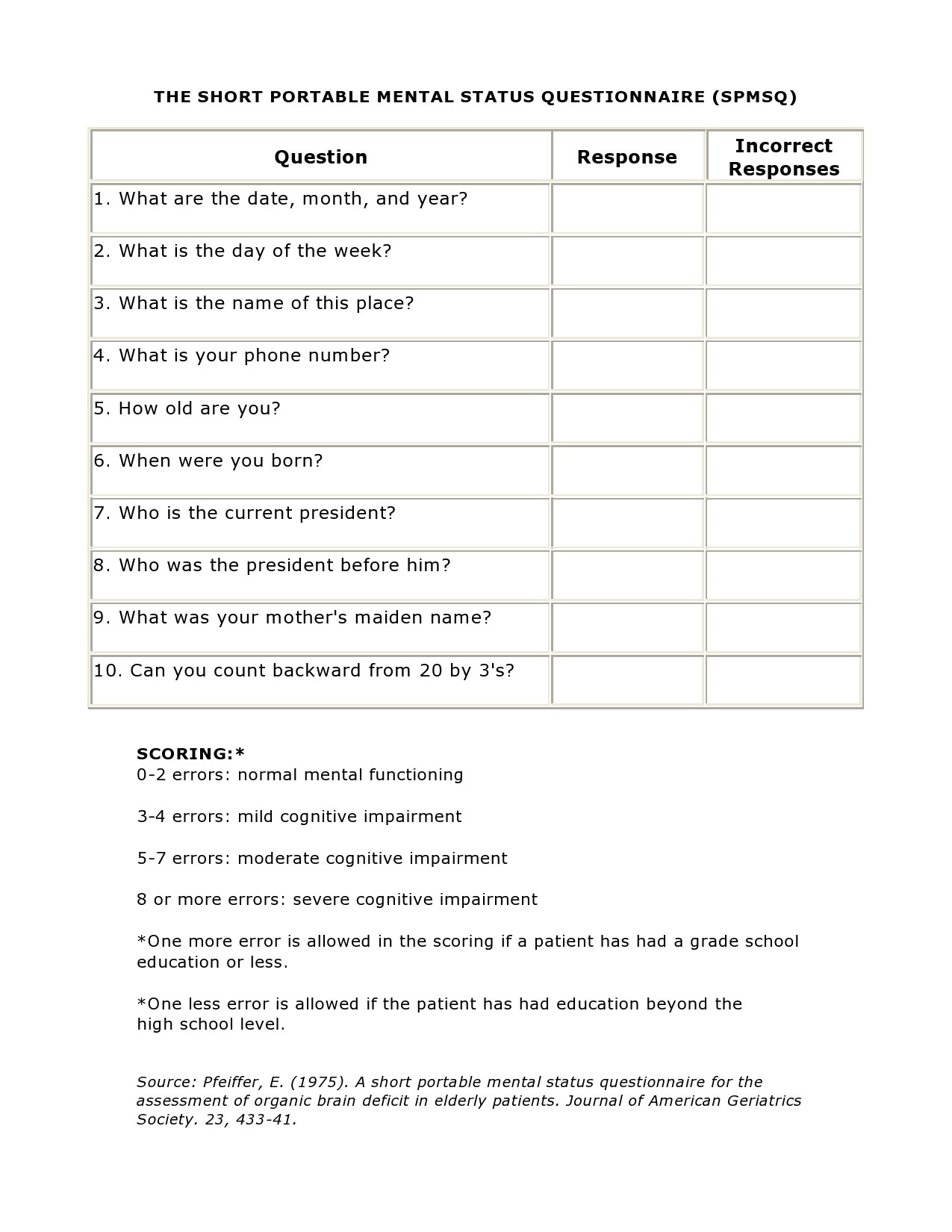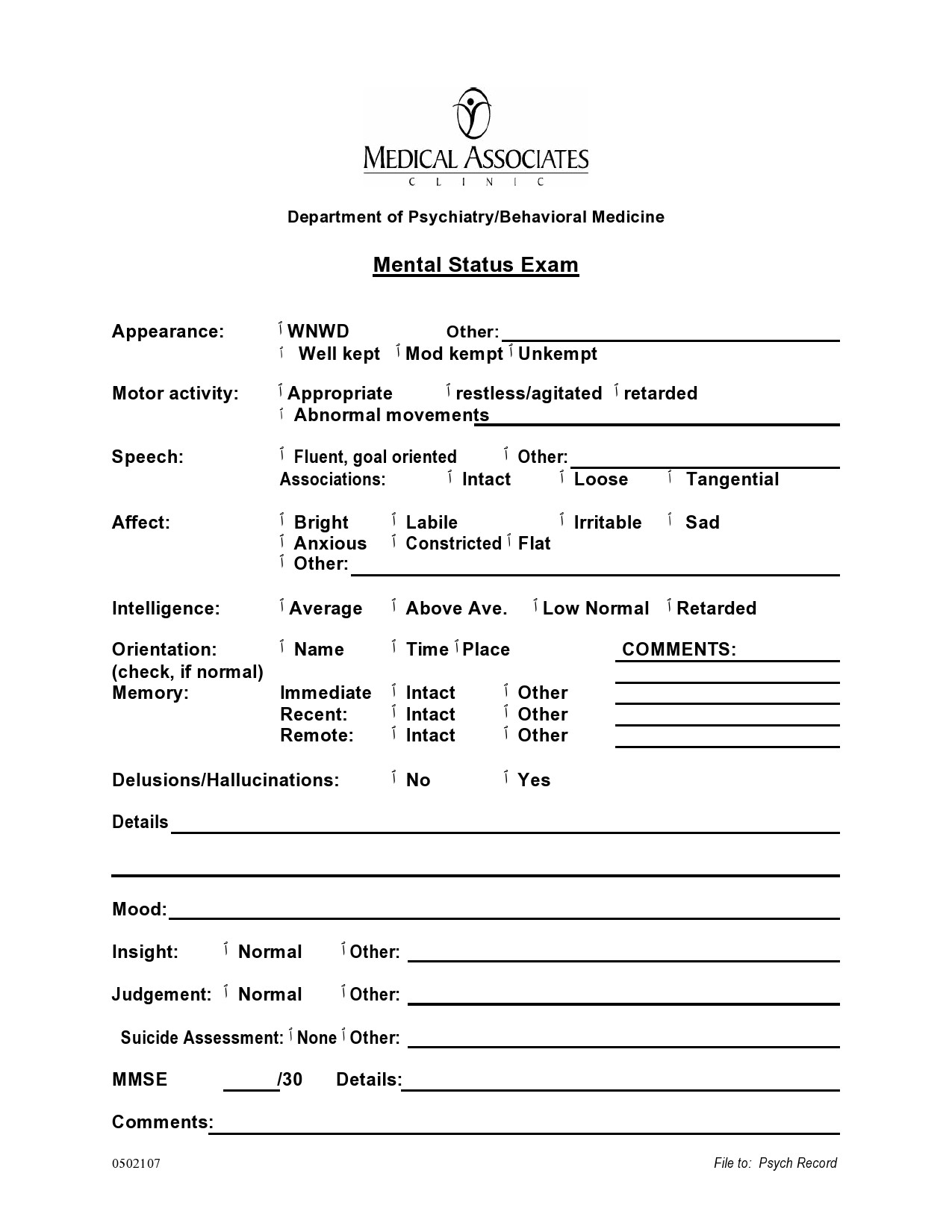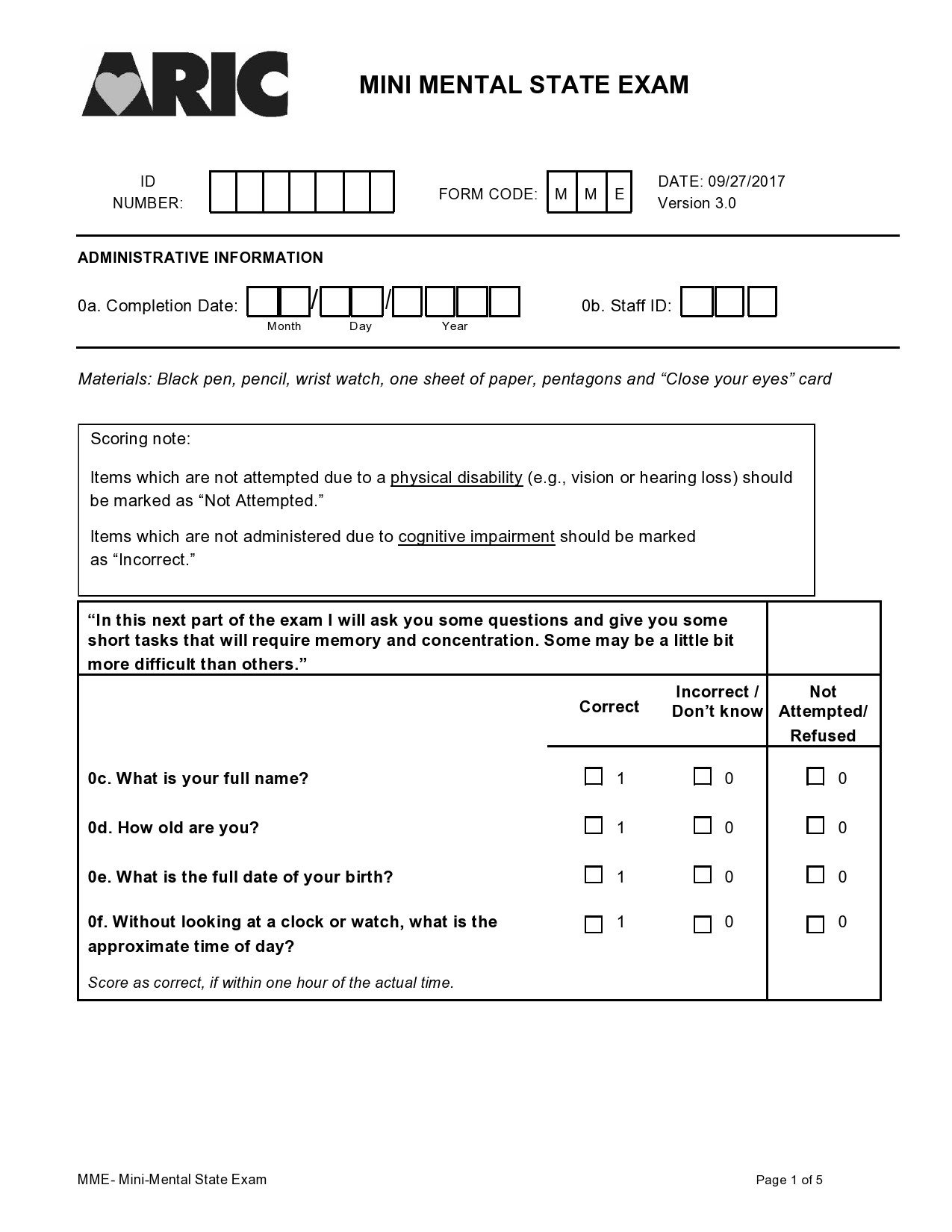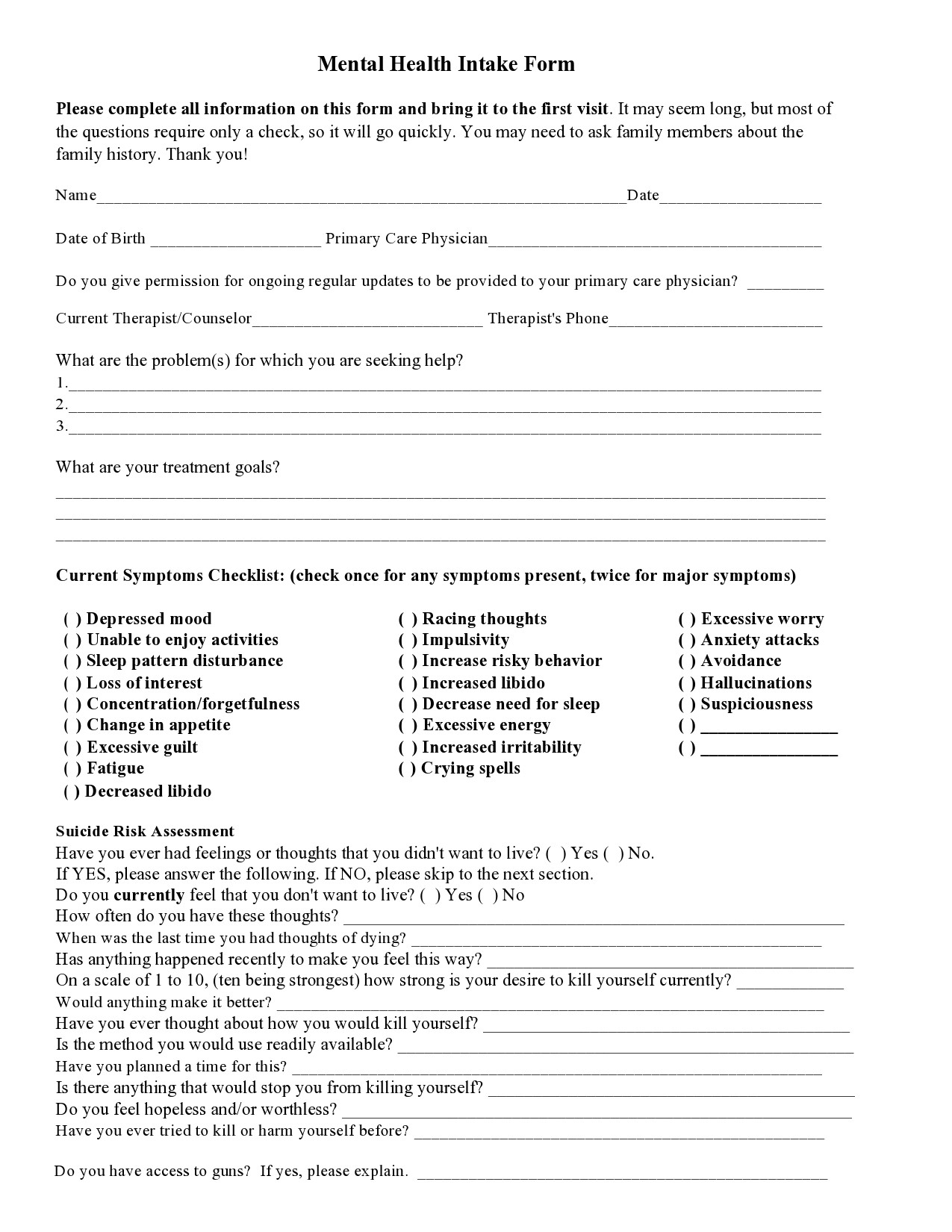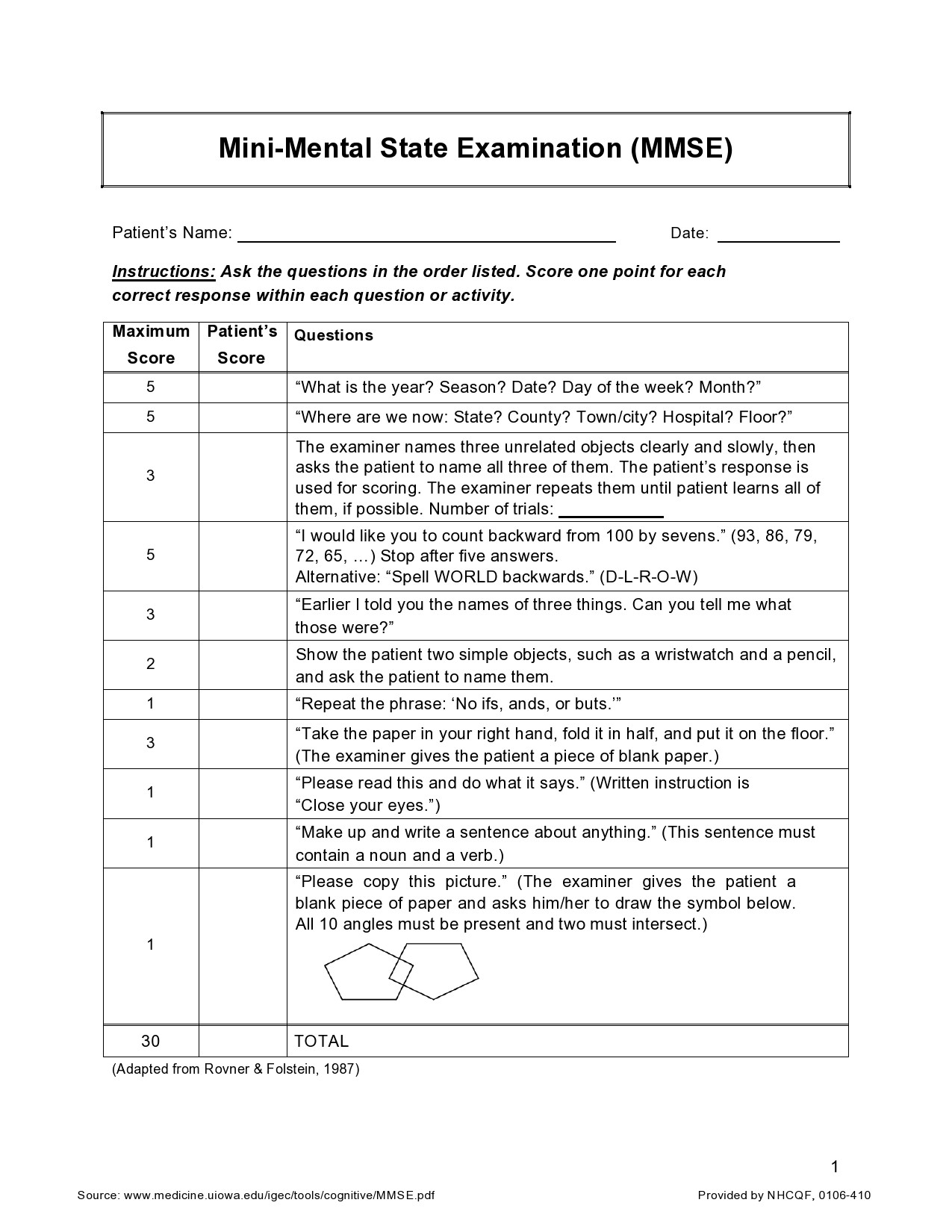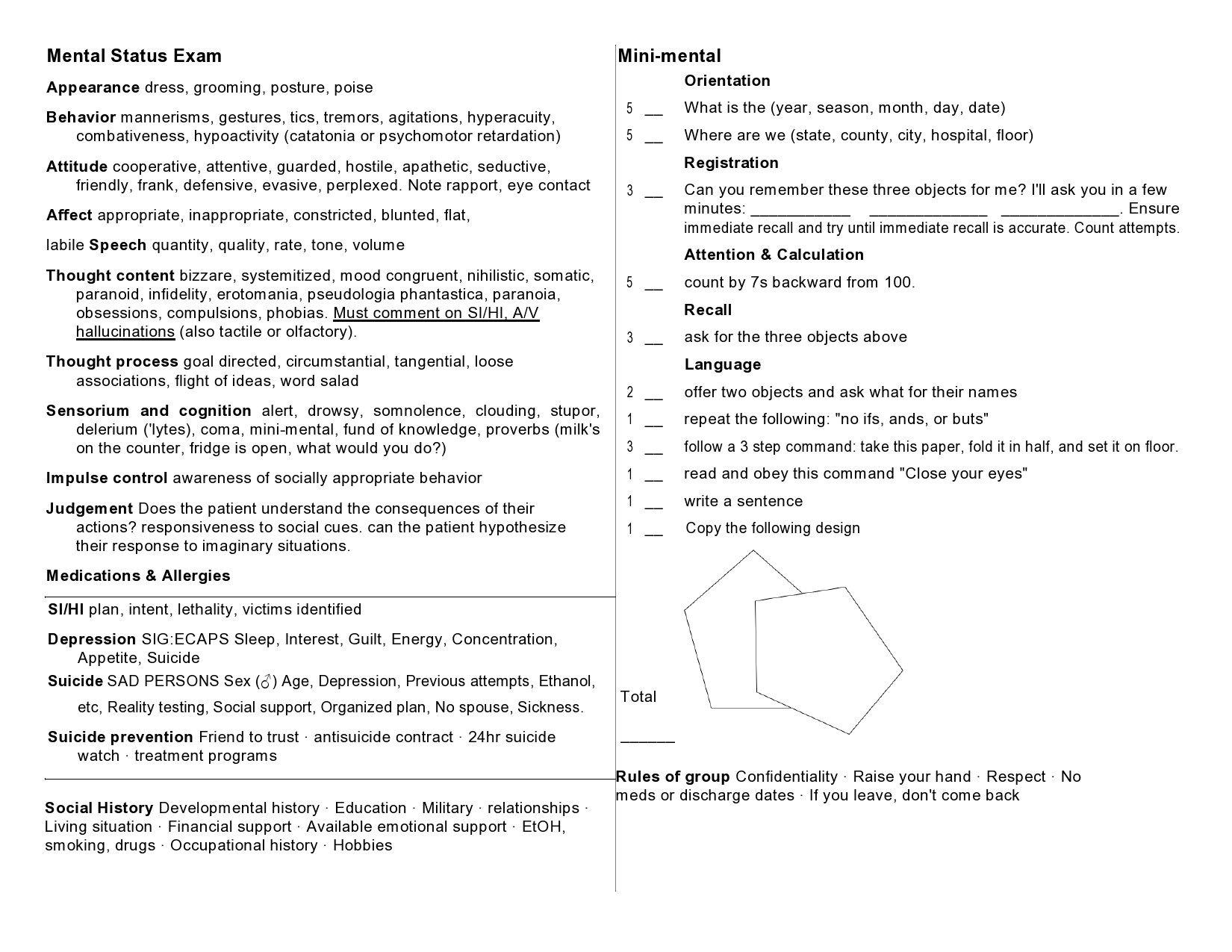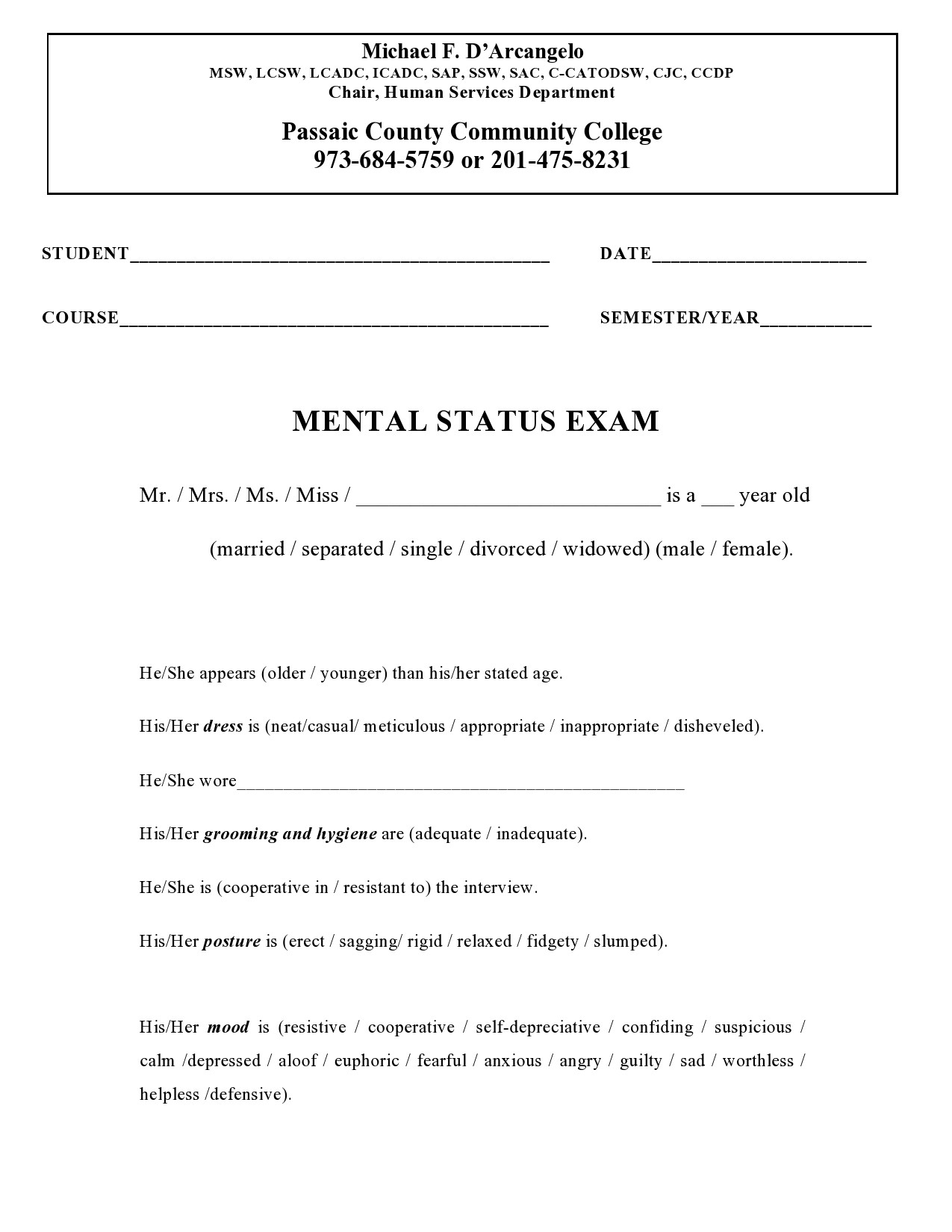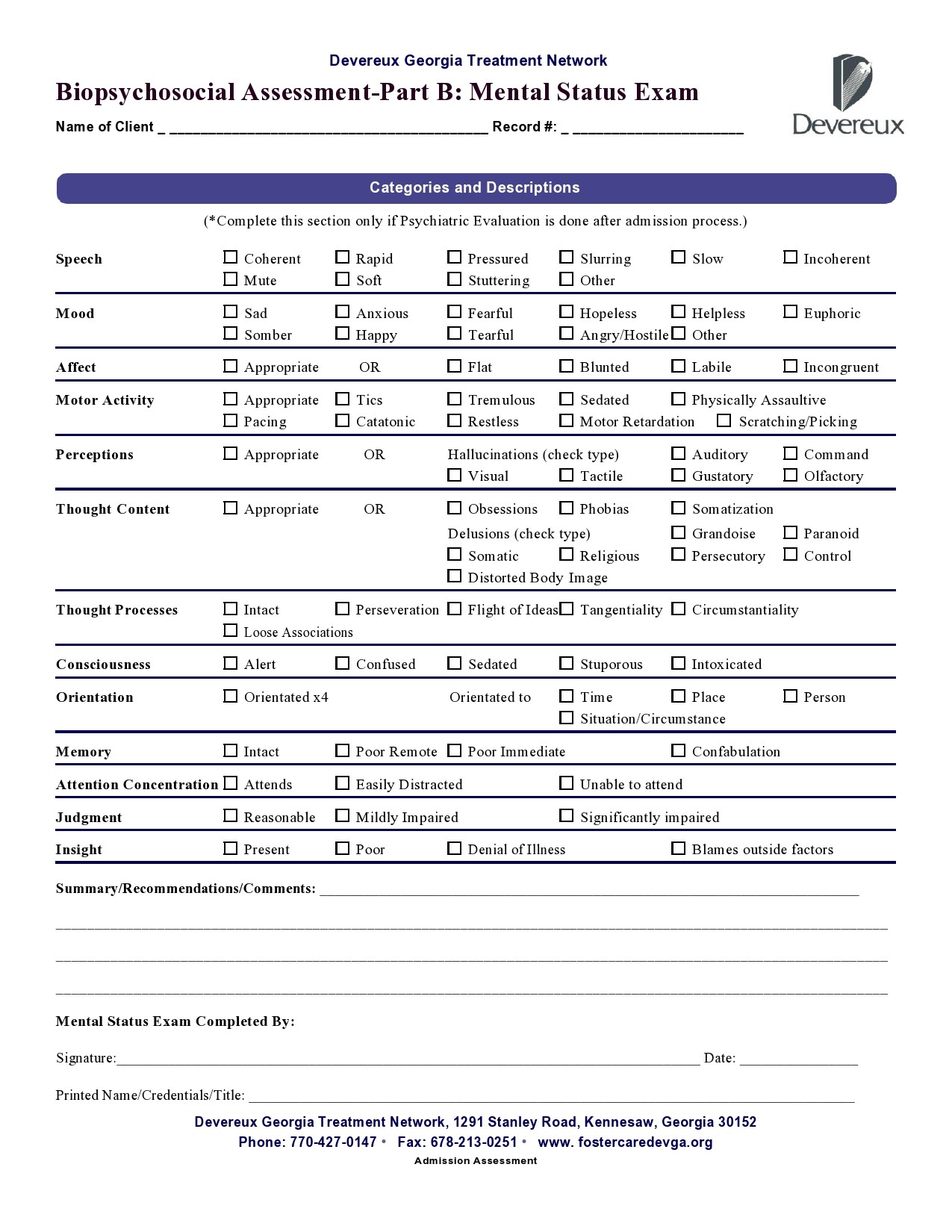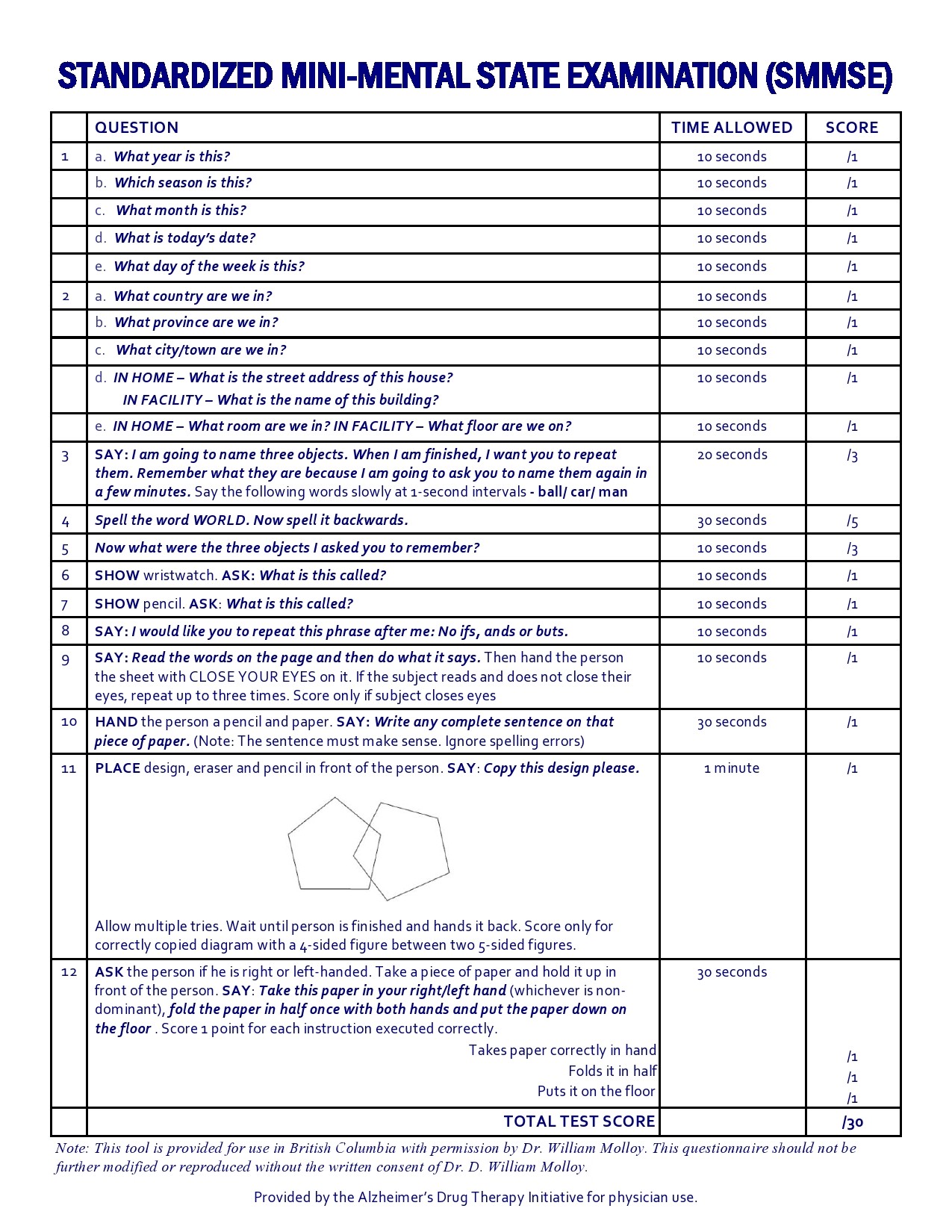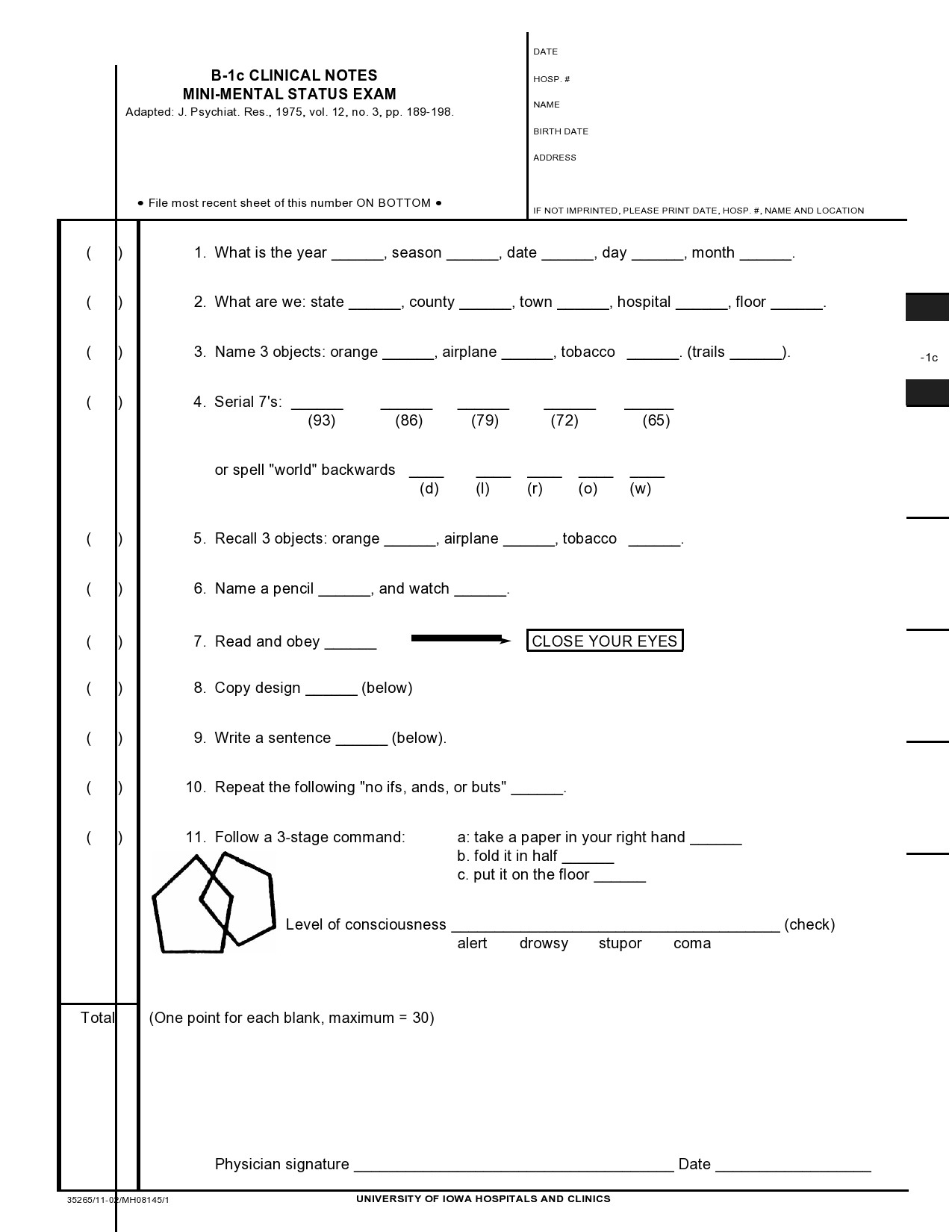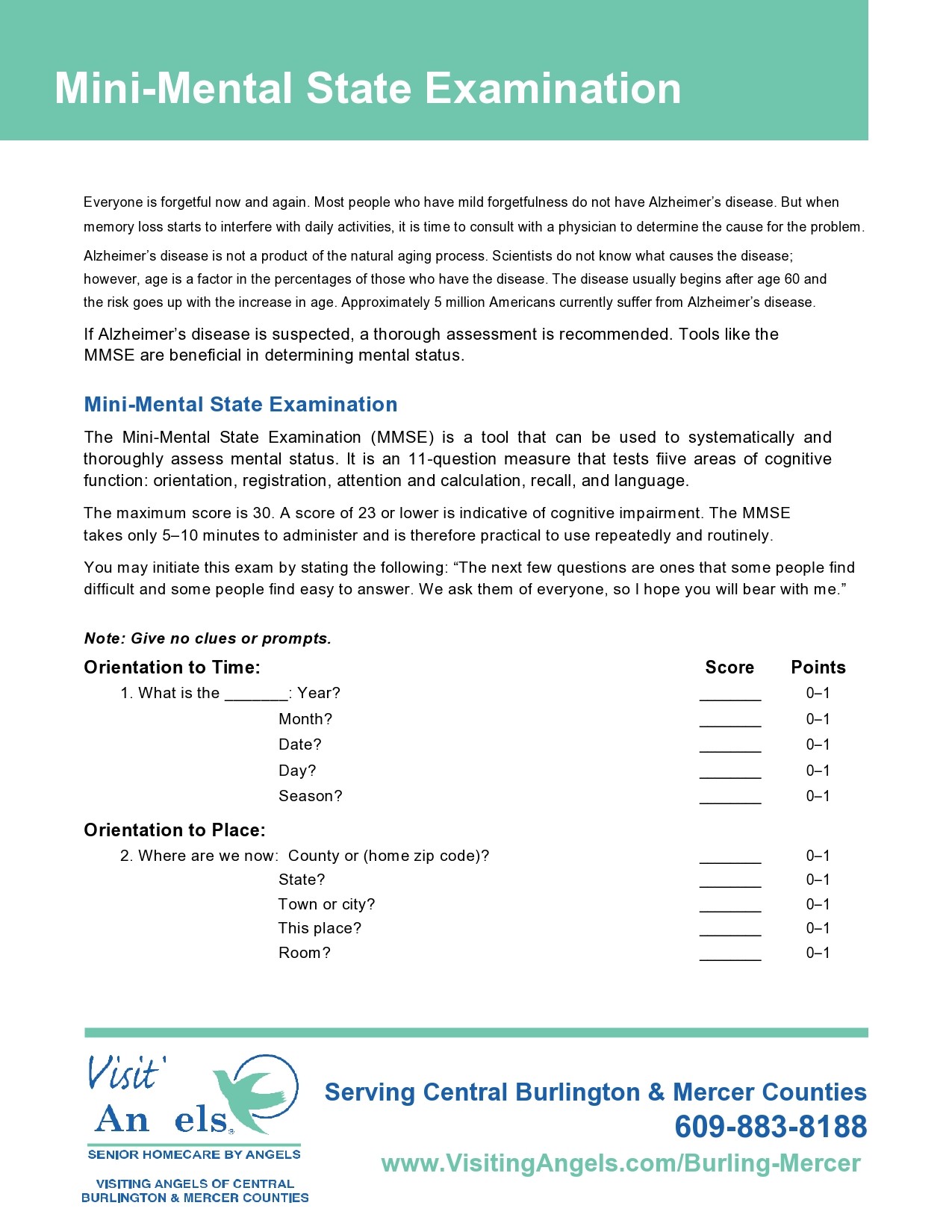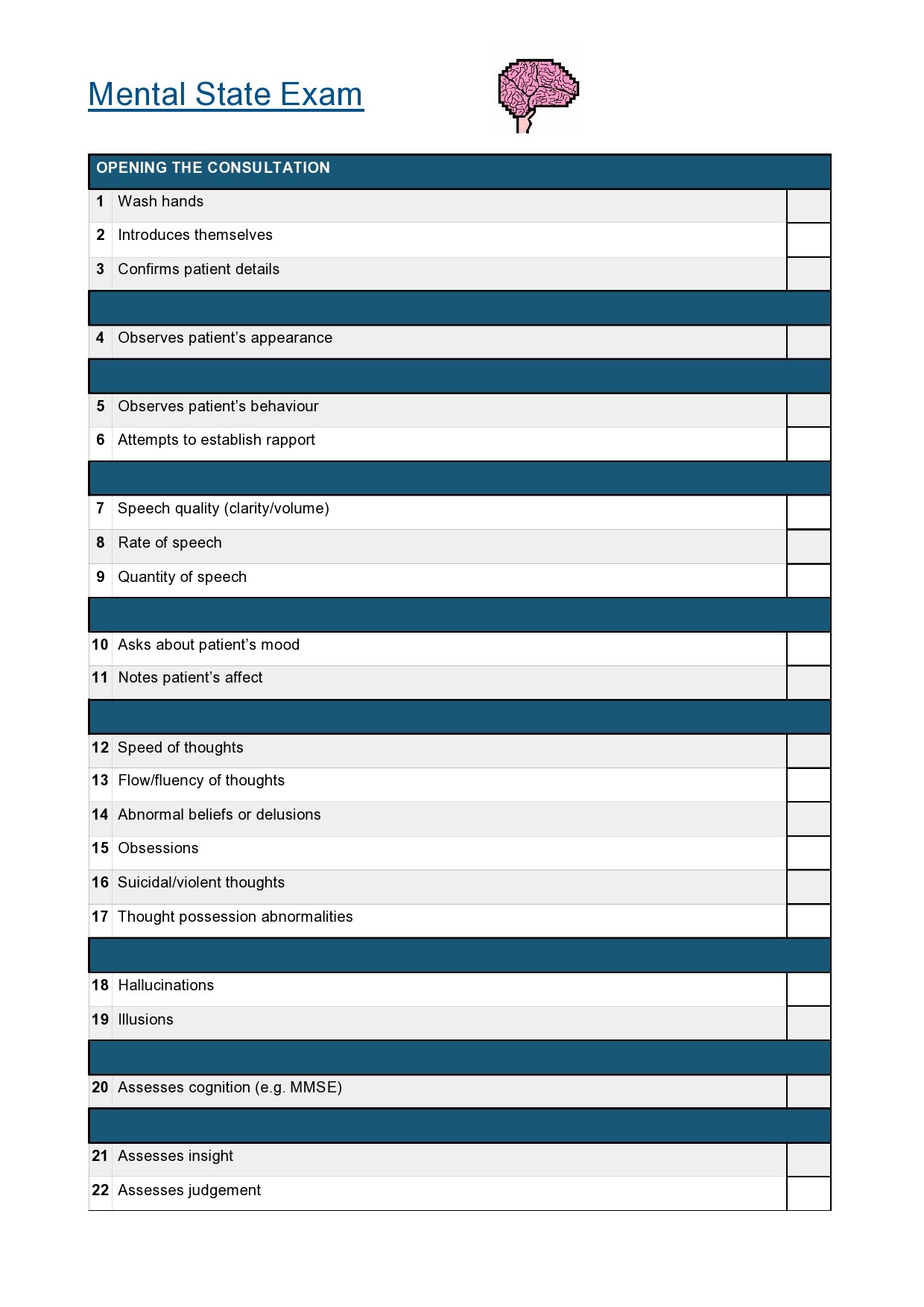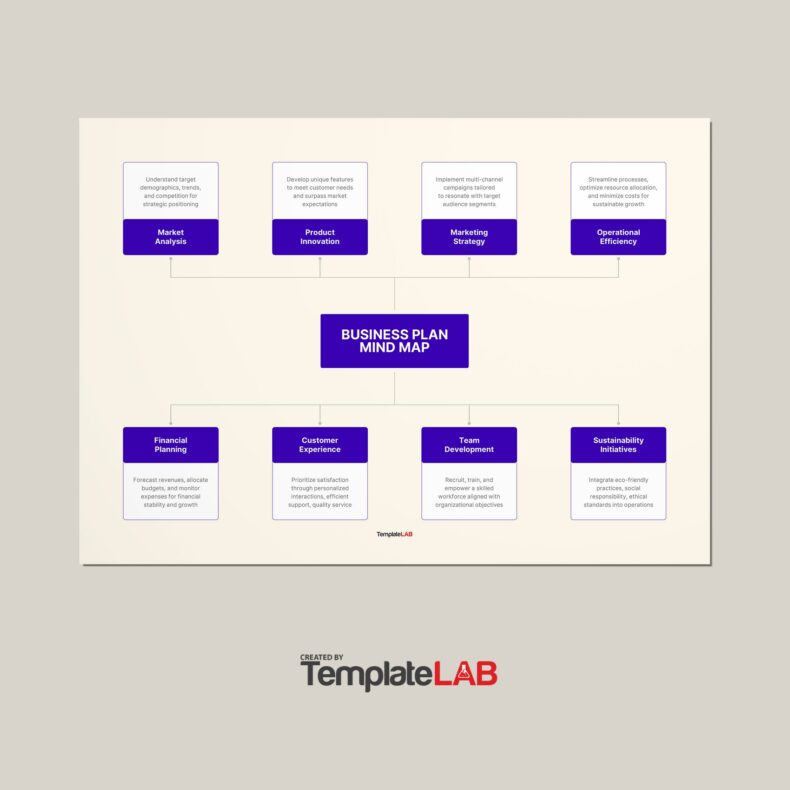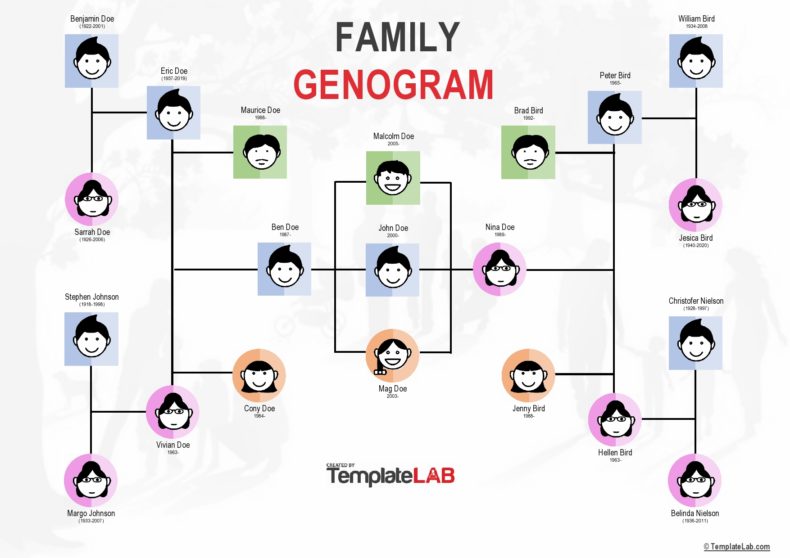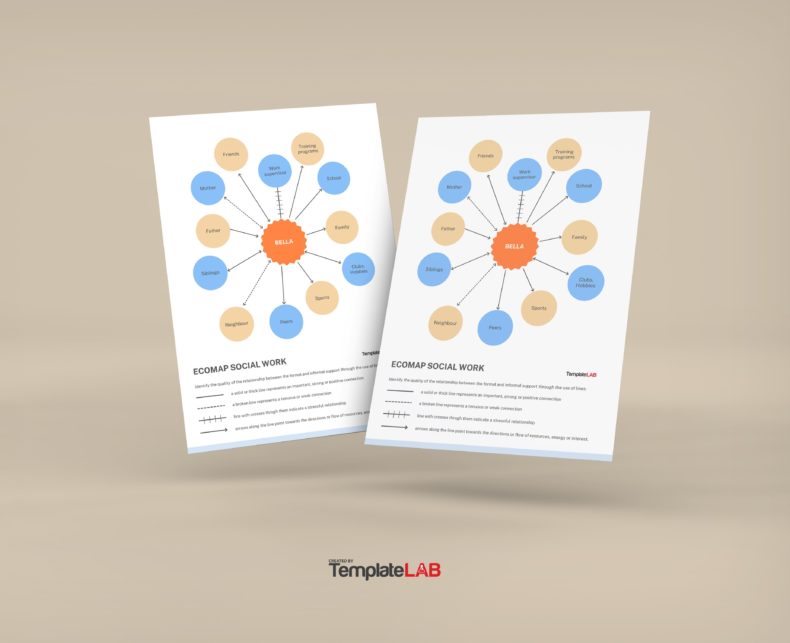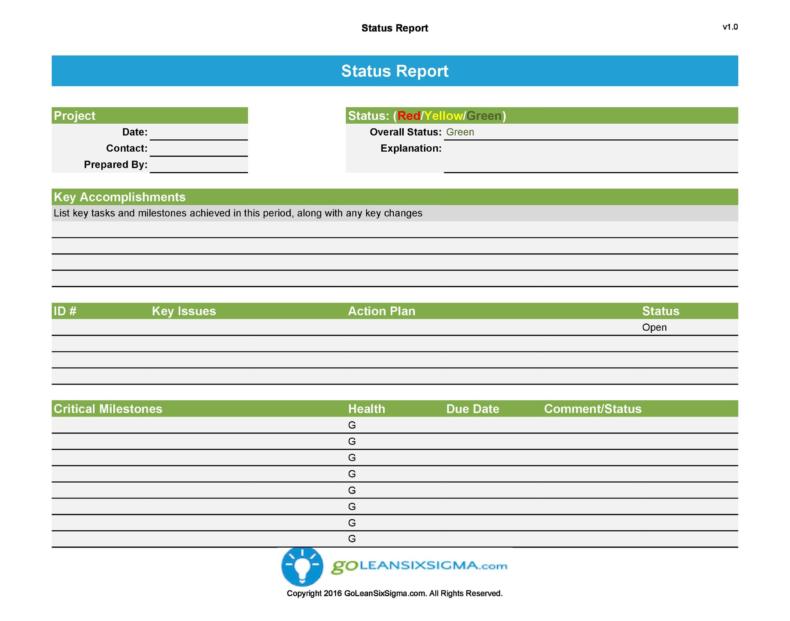A mental status exam is similar to a physical exam, although here, the examination assesses a person’s mental status. It involves a series of examinations and observations designed to reveal either pathological or normal findings. Then you would record all of your observations and results in a mental status exam template.
Table of Contents
Mental Status Exam Templates
The components of a mental status exam template
In practice, providers don’t really perform mental status examinations explicitly designed to evaluate the mental status of an individual. Throughout the course of a normal interview with a patient, most of the information relevant to his assessment is indirectly gathered. This interview can provide a chance to consciously consider the elements of a mental status exam template.
In the course of practicing medicine daily, you may encounter persons with cognitive abilities that are significantly impaired, disordered thought processes, altered memory capacity, and otherwise, abnormal mental status. The primary goal here is to discern when such abnormalities exist then classify them as specifically as possible.
In some cases, the condition of the patient prevents a comprehensive, ordered assessment of his mental status and as such, flexibility becomes important. Knowing when to stop a more comprehensive examination takes some experience. Forming actual diagnoses using a mental status exam cheat sheet is the last step in this process and it goes way past the scope of this article.
Even for those who have had much knowledge and experience to produce diagnoses, this won’t be a possibility after only one encounter with the patient. The results recorded in the mental status exam form can only produce a “snapshot” of your patient.
Mental Status Exam Examples
Often, you need several interactions along with information about the individual’s normal level of function in a mental status exam cheat sheet before you can come up with a meaningful conclusion about the patient’s condition. The components of a mental status exam example are:
- Appearance
What is the patient’s physical appearance?
Is the patient dressed neatly showing clear attention to detail?
Is the patient well groomed? - Level of Alertness
Is the patient awake? If not, can you wake up the patient?
Can the patient stay focused on your conversation or questions?
How long is the patient’s attention span? - Speech
Is does the patient use a normal volume, quantity, and tone while talking? - Behavior
Is the patient pleasant, agitated or cooperative?
Are the patient’s behaviors appropriate for the situation? - Orientation (Awareness of Environment)
Does the patient know where he is and why he’s there?
Does the patient know who you are?
Can the patient tell you the day of the week and the complete date? - Mood
How does the patient feel?
Is the patient’s mood appropriate for the situation? - Affect
How does the patient seem to you?
Does the patient maintain eye contact?
Is the patient excitable?
Does the tone of the patient’s voice change as he talks? - Thought Process
Does the patient talk in a logical and organized way?
If not, how off-base is the patient?
Does the patient tend to stray from your conversation?
Are your patient’s thoughts properly linked or are they scattered? - Thought Content
Is your patient paranoid or delusional?
Is your patient phobic or hallucinating?
Does the patient fixate on a single idea? - Memory
Can the patient remember a list of objects after a few minutes have passed?
Does the patient remember events or people from his past? - Ability to perform calculations
Can the patient perform simple subtraction, addition, multiplication or division?
Are the patient’s responses appropriate for his education level?
Has the patient noticed any difficulties when balancing his checkbooks or calculating change when purchasing items? - Judgment
When given a situation, does the patient provide appropriate solutions or responses? - Higher cortical reasoning and functioning
Does the patient make abstract, concrete or bizarre interpretations when you give him a situation or ask him questions?
Mental Status Exam Cheat Sheets
Applying a mental status exam template
One of the core skills of every qualified mental health professional is to make a Mental Status Examination or MSE example. This is a key aspect of the first psychiatric assessment in a psychiatric or outpatient hospital setting. This exam involves systematic information gathering based on observation of the behavior of the patient while being in the presence of the clinician during the interview.
The main objective of a mental status exam template is to gather evidence of any signs or symptoms of a mental disorder that includes posing a danger to the self and other people present during the interview. Moreover, you can use the information about the patient’s insights, judgment, and capacity for abstract reasoning in the mental status exam form to make decisions about treatment and treatment settings.
You would carry out the interview like an informal conversation where you use a combination of closed and open questions along with structured tests to evaluate the patient’s cognition abilities. Many consider a mental status exam example as a part of the comprehensive physical examination done by nurses and doctors although you may create an MSE example in an abbreviated and cursory way in non-mental health settings.
The information gathered during the interview is usually recorded as free-form text with standard headings but there are shorter mental status exam templates available that you can use in case of emergency. Together with the social and biographical data of the patient’s psychiatric history, you can use the information gathered in the mental status exam form to generate a psychiatric formulation, a diagnosis, and a plan for the patient’s treatment.
Mental Status Exam Forms
How to examine mental status?
A mental status exam template is a document where you record your evaluation of a patient’s current mental capacity by observing his behavior, general appearance, any bizarre or unusual perceptions and beliefs, mood, and all other aspects of cognition.
You would conduct this examination on anyone with an altered mental status or developing impairment of cognition, whether chronic or acute. It involves the recording of baseline results with the examination repeated every year and whenever you observe a change in the patient’s mental status. You must inform patients that recording of mental status is a routine procedure and that they don’t have to feel embarrassed by it.
The setting of the examination is usually a quiet room. As an examiner, you should make sure the patient can hear the questions clearly. For patients who don’t speak English, you should ask them questions using the language they’re fluent in. In a mental status exam, you assess the cognitive function of a patient in different areas.
Here, you must first establish that the patient’s full attention is on you. You can do this by evaluating their attention level while taking their history or simply by asking them to repeat the last phrase you said immediately. Conducting a test on an inattentive patient isn’t useful. The parameters of cognitive function to test and some examples of how to test may include:
- Orientation
Person: Ask the patient what his name is.
Time: Ask the patient what date it is.
Place: Ask the patient the name of your establishment. - Short-Term Memory
Give the patient a list of objects then ask him to recall 3 of the objects after 2 to 5 minutes. - Long-Term Memory
Ask the patient a question about his past “What was the color of the first car you owned?” or “What was the name of your first-grade teacher?” - Math
Use a simple mathematical test for this. Give the patient simple mathematical equations to solve or give him situations where he has to calculate the amount of money he needs to pay when purchasing a number of items. Prepare these problems and questions before the exam. - Word Finding
Ask the patient to name as many objects as he can think of that belong to one category like animals, countries, and the like within a minute. - Concentration and Attention
Ask the patient to spell a 5-letter word backward. If the patient does this effortlessly, ask him to spell a 6-letter word the same way. - Naming Objects
Present an object to the patient then ask him to name the object and its different parts. - Following Instructions
Start with 1-step instructions. If the patient can follow, increase to 2-step instructions. Then move on to 3-step instructions to see if the patient can really follow. - Writing
Ask the patient to write a complete sentence. The sentence should make sense and it should have a subject and an object. You don’t have to check misspelled words. - Spatial orientation
Ask the patient to draw a clock then give him a specific time to mark on the clock. You can also ask the patients to draw two pentagons that intersect with each other. - Abstract Reasoning
Ask the patient to identify a theme between 3 to 4 objects. For instance, show a picture of an orange, a kiwi, a banana, and a pair. All of these are fruits. Show a couple of examples for this exercise. Then try asking the patient to interpret a proverb that is moderately challenging like “People living in houses made of glass should never throw stones.” - Judgment
Ask the patient a hypothetical situation that requires good judgment. For instance, ask the patient what he would do if he found a wallet in front of a police station. Naturally, he should surrender it to the authorities.

